
The scores of cathedrals and lesser churches have always occupied a special part of my affinity for Spain. For it is in these ostensible houses of God that you get a sense of the country's history and school of thought, providing a basis for understanding the essence of Spain. You certainly won't get a complete picture. You'll have to look at Goya's etchings in the Prado, spend lots of time in bars, see Flamenco and fútbol, and maybe take in a bullfight to get a more catholic (small c) impression.
But cathedrals are a good place to start, because, in a way, they are monuments to the variety of life that makes up Spain. Keep in mind that everyone from kings to cardinals and skilled masons to ditch diggers participated in their construction. And, that the result of their patronage and labor was the literal and figurative centerpiece of any city or town.
And, of course, the Cathedrals are the embodiment and repositories of spectacular artistic and engineering achievements. The interior details are limitless: from the architecture itself to cast metal screens that surround carved choirs; to saints sculpted in marble and wood or painted on plaster, canvas, and stained glass; to their shards housed in elaborate if dubious reliquaries. And, don't forget the gargoyles and all the other pure whimsical elements of the exteriors.
This is the artistic spirit of Spain, spread to every province and every corner of the kingdom for anyone to see. You don't have to go to the Prado to see all the best art in Spain.
Table of Contents
The Basilica of the Sagrada Familia in Barcelona
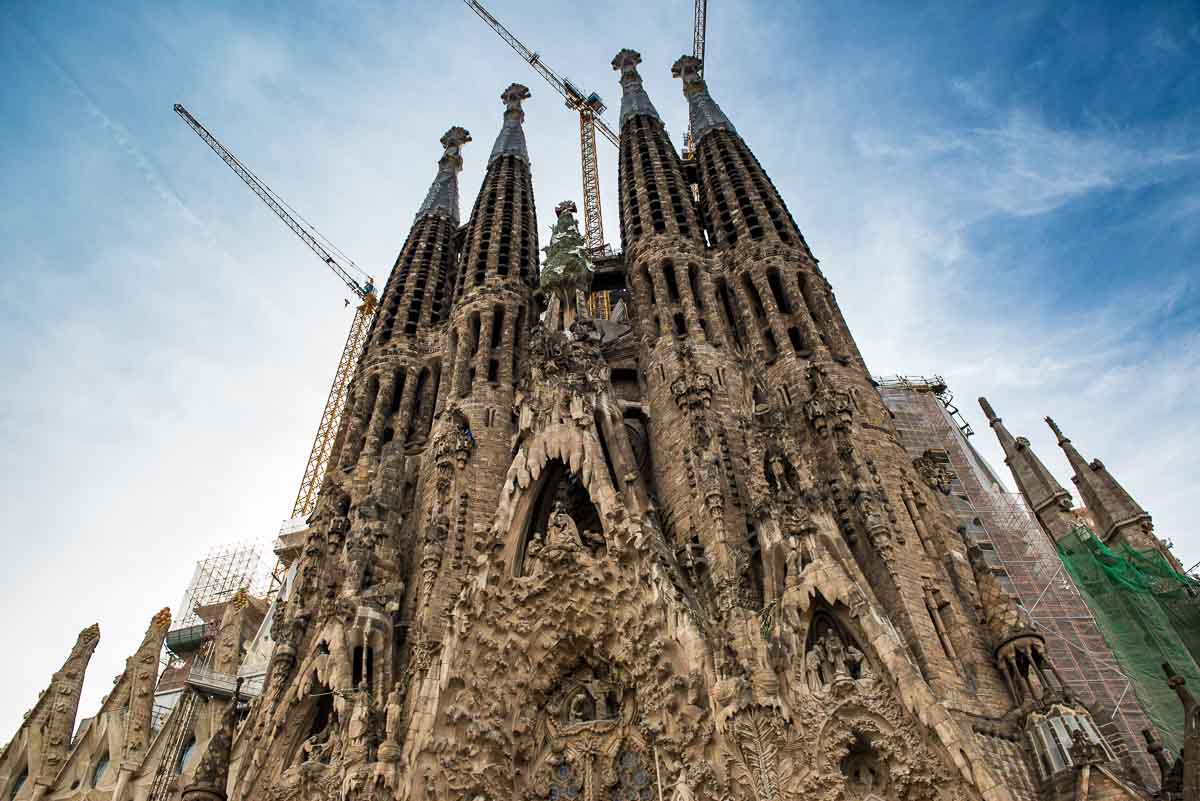
Words begin to fail when you are asked to sum up Antoni Gaudi's Sagrada Familia in Barcelona. Perhaps the best thing to say is “it's fantastic” in the literal sense of that word. Gaudi was a visionary who utterly changed architecture in the early 20th Century. The façade, which seems to drip off the structure, the incorporation of animals and vegetables in the decoration, the fanciful geometry of the interior columns, and finally, the color of the windows: all elements are inspired.
Gaudi's design was not finished at his death, and unfortunately many of his models and plans were deliberately destroyed during the Spanish Civil War.
But the models have been mostly restored from the shards left on the floor, and the style has been honored and amplified by subsequent architects, sculptors, and glass artists. If you go, allow hours to see it. And remember to occasionally close your gaping mouth.
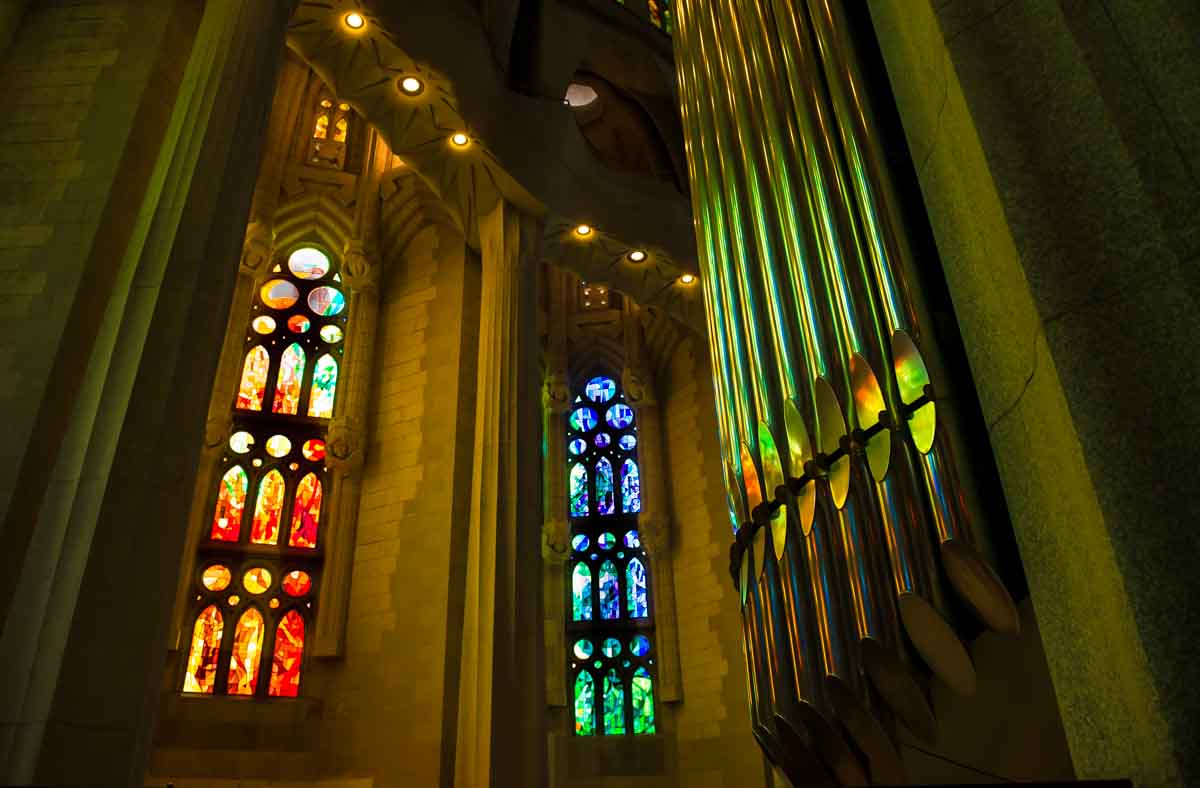
We first saw the Sagrada Familia in its comparatively incipient form when we first visited Spain in 1975. It's come a long way since then, and is actually scheduled for completion in 2026. One should note, though, that there's a saying in Spain when something is taking a very long time. It amounts to: “It's taking longer than the Sagrada Familia.”
One tip for visiting the Sagrada Familia: make your reservations in advance for a timed entry. (Or, if you want a guided tour that includes a timed entry, see the button below.) Otherwise, you'll be standing in line for as much as a couple of hours. And, don't begrudge the entry fee. That's how they're paying for this.
 Want more tips like these?
Want more tips like these?
Join the 3500 other travel enthusiasts getting our best advice right in their inbox. And get our 50 best travel tips sent to you right away!
The Gothic Cathedral of Barcelona
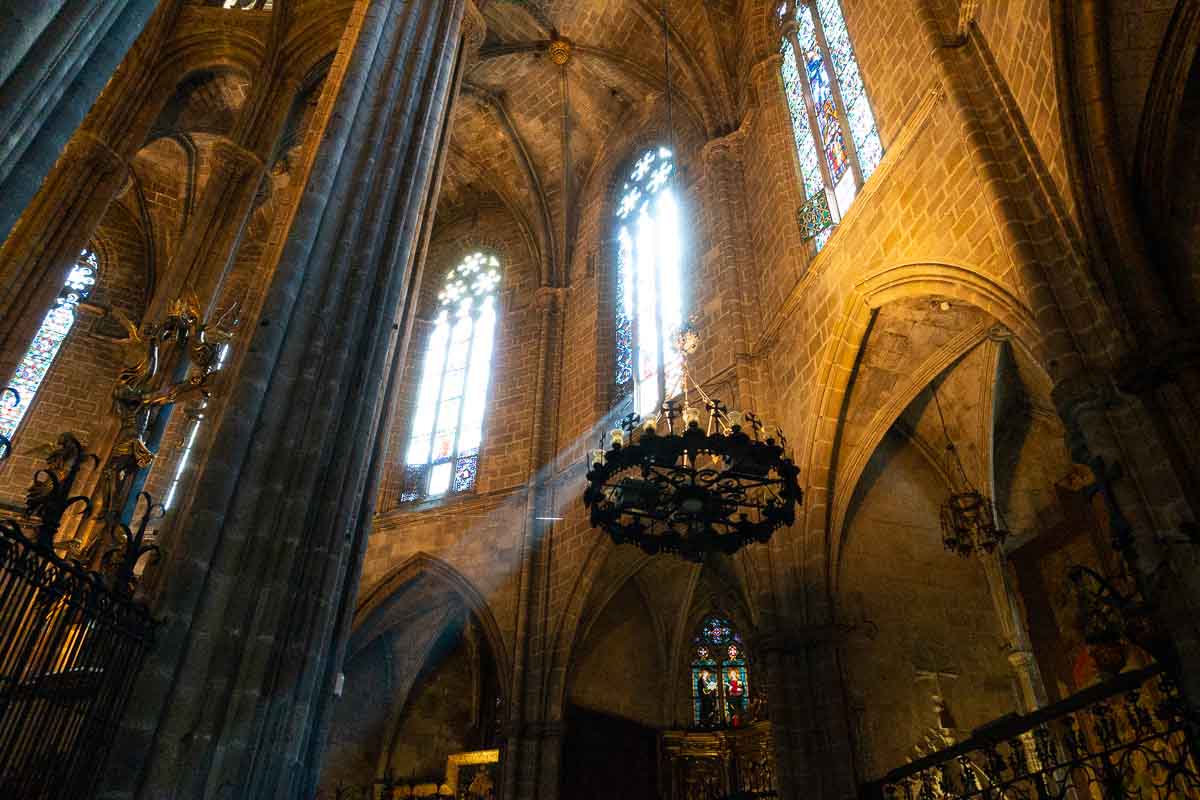
It probably should be mentioned that the actual Cathedral of Barcelona is the Gothic church in the old part of the city–the Barri Gòtic (in Catalan) or the Barrio Gótico in Castilian. The Sagrada Familia is a “mere” basilica. The Gothic Cathedral is the home church of the Bishop of Barcelona.
The cathedral was constructed from the thirteenth to fifteenth centuries, with the principal work done in the fourteenth century. In the late nineteenth century, the neo-Gothic façade was added over the original nondescript exterior.
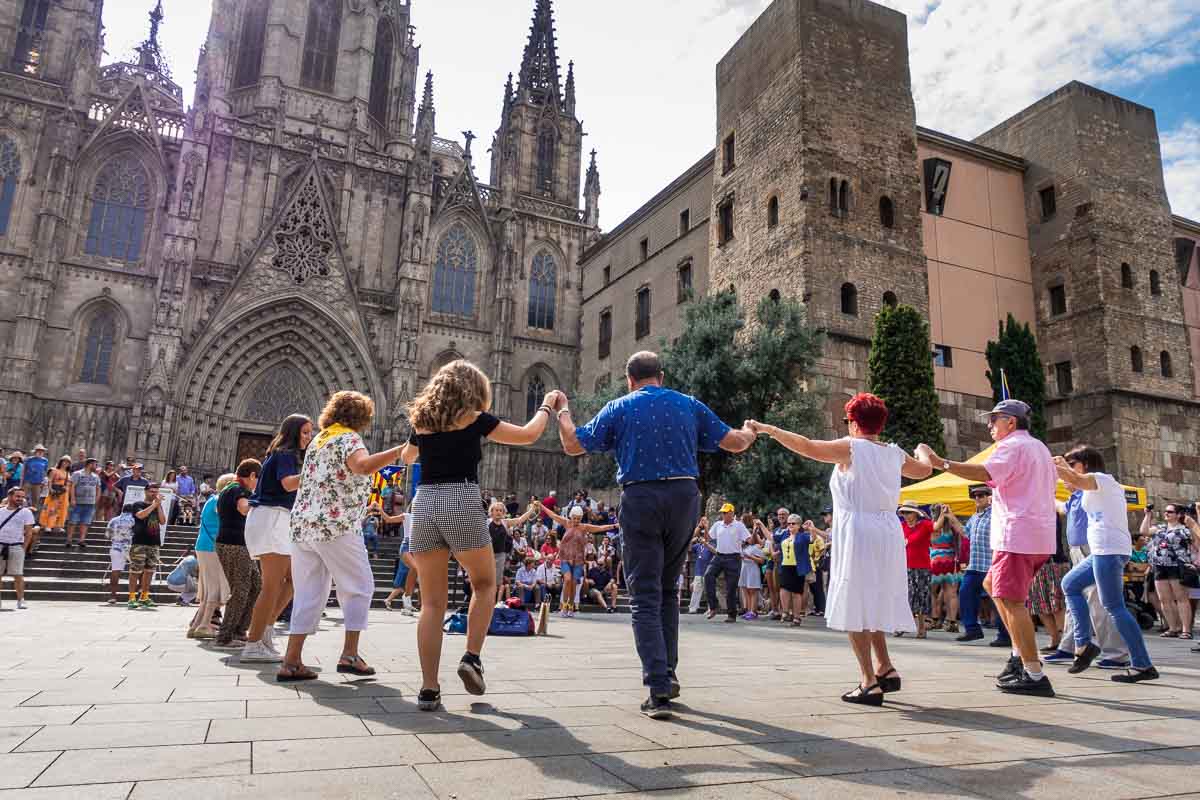
As Spanish Cathedrals go, the Barcelona Gothic Cathedral is rather ordinary in its decor, if one can say any cathedral is ordinary. But it does provide the backdrop for one of the most charming Catalan traditions, the Sunday gathering to dance the Sardana, the Catalan national folk dance and a ritual worth viewing at least once on your visit to Barcelona.
The Cathedral of Sevilla
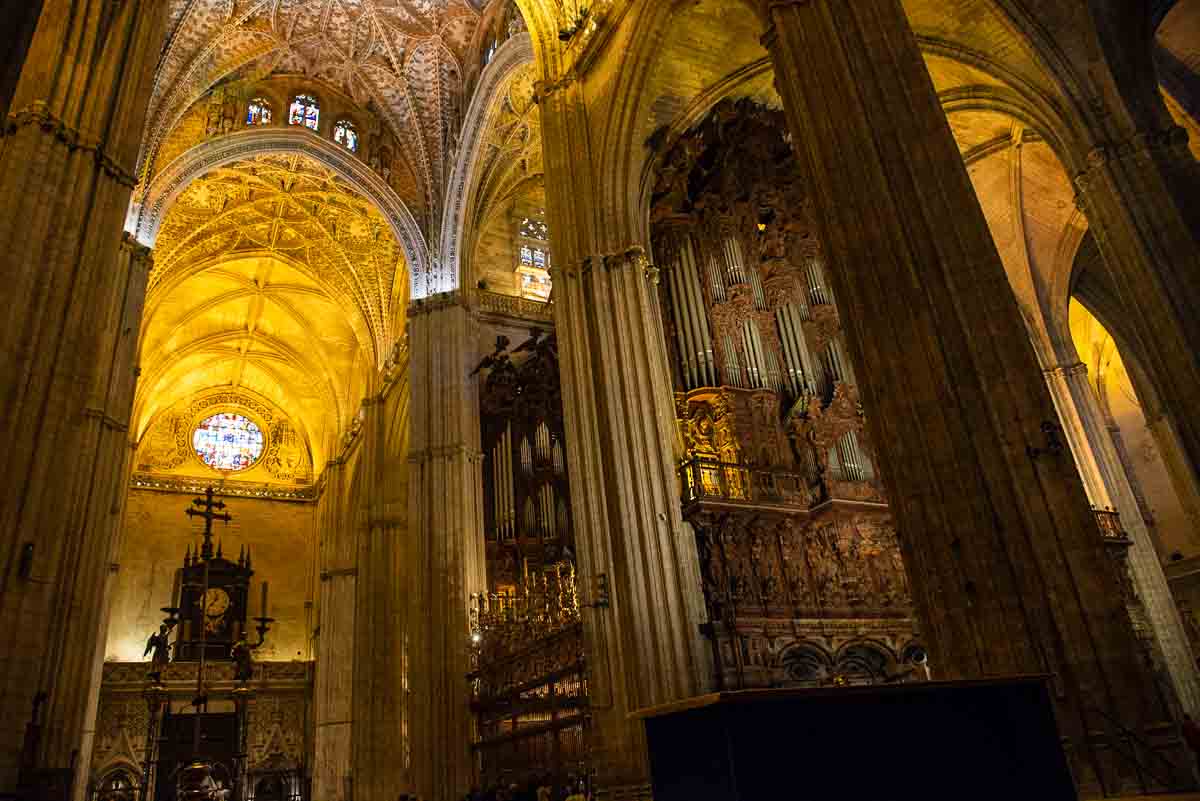
At the time of its completion in the early 16th Century, the Cathedral of Sevilla was the largest church in the world, at the time overtaking the Hagia Sophia of Istanbul. Today, it's the fourth largest church, and still the largest in Spain.
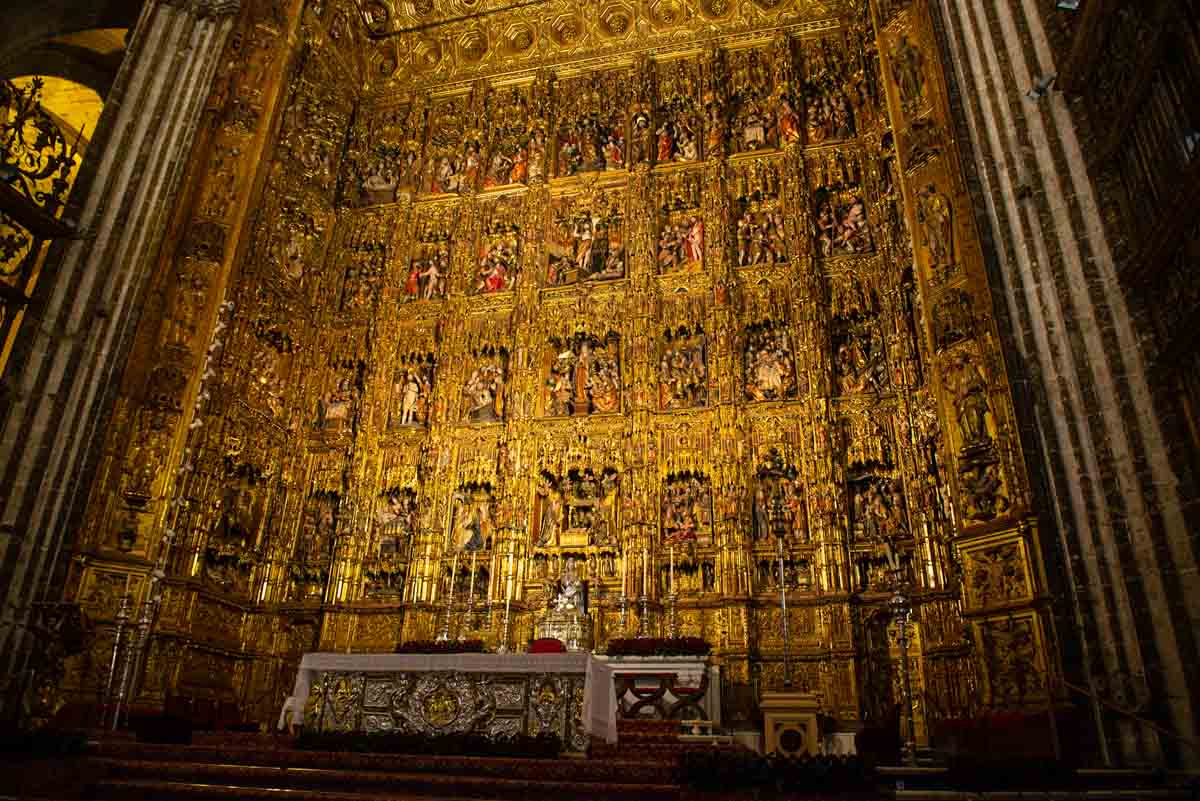
The Sevilla Cathedral, in addition to its size, has several distinguishing features. Of particular note is the enormous golden altar, and the choir that is flanked by two organs. As you gaze up at the organs, be sure to take note of the decoration on the ceiling. Gothic artistry at its highest expression.
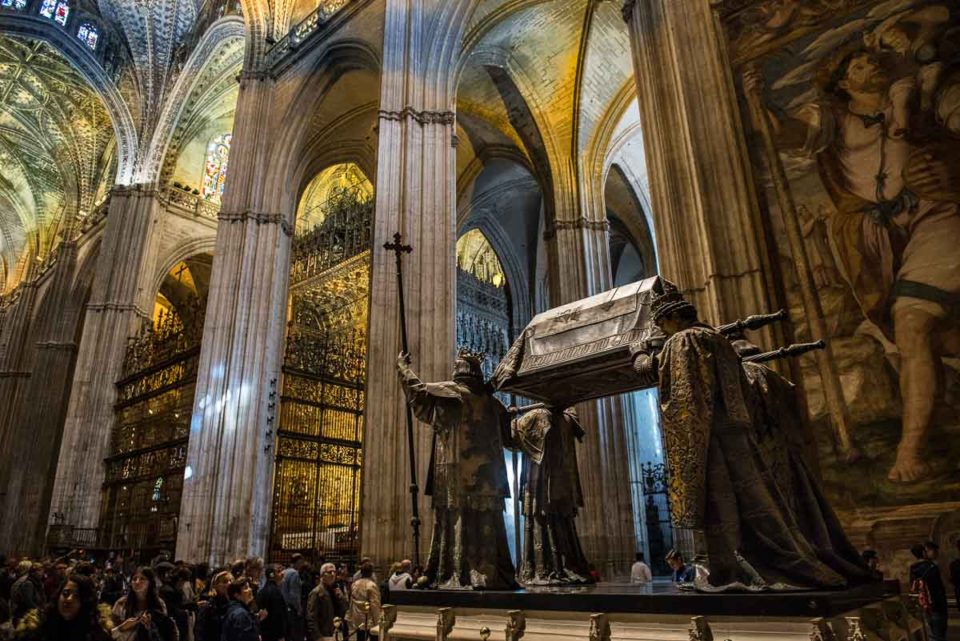
No matter what you might think of Christopher Columbus, or Cristobal Colón, as he's known in Spain, you have to admit that he is perhaps the (non religious) person who most affected the history of the world – for good or bad.
The Cathedral of Sevilla hosts the tomb of Christopher Columbus. Or what is said to be his tomb after his remains were brought back from the New World. His grave his been around the world, so to speak. (The question of where Columbus is buried is still in dispute.)
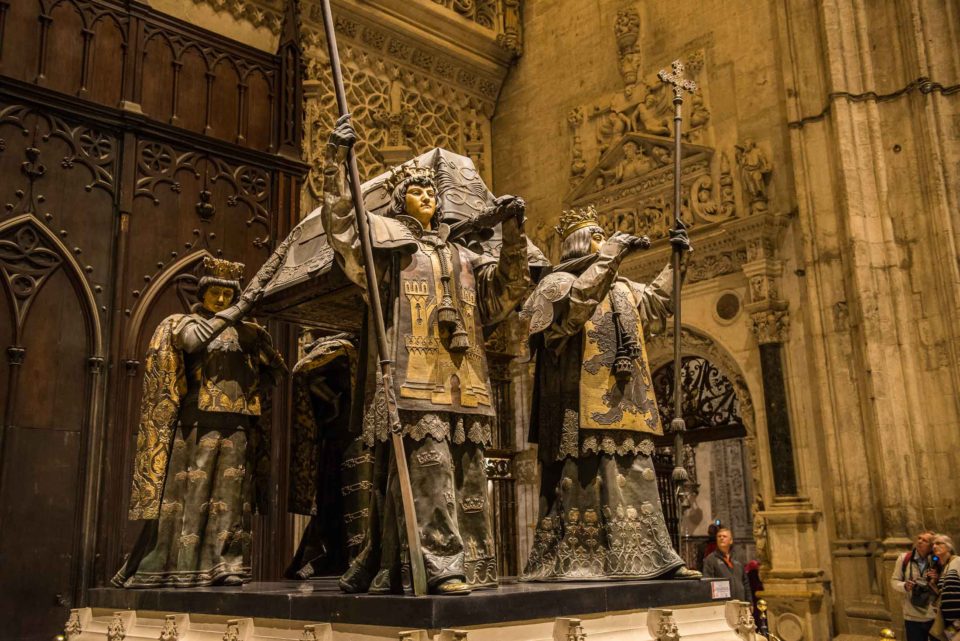
There is no dispute, though, about the catafalque itself. It's a lovely piece of art. The tomb of Columbus is carried by figures representing the kings of the four regions of Spain: Castilla, Leon, Navarra, and Aragon. The coats of arms on the kings and the surroundings are also full of symbols that require a separate article to elaborate. I invite you to check that out for yourself.
The Cathedral of Burgos
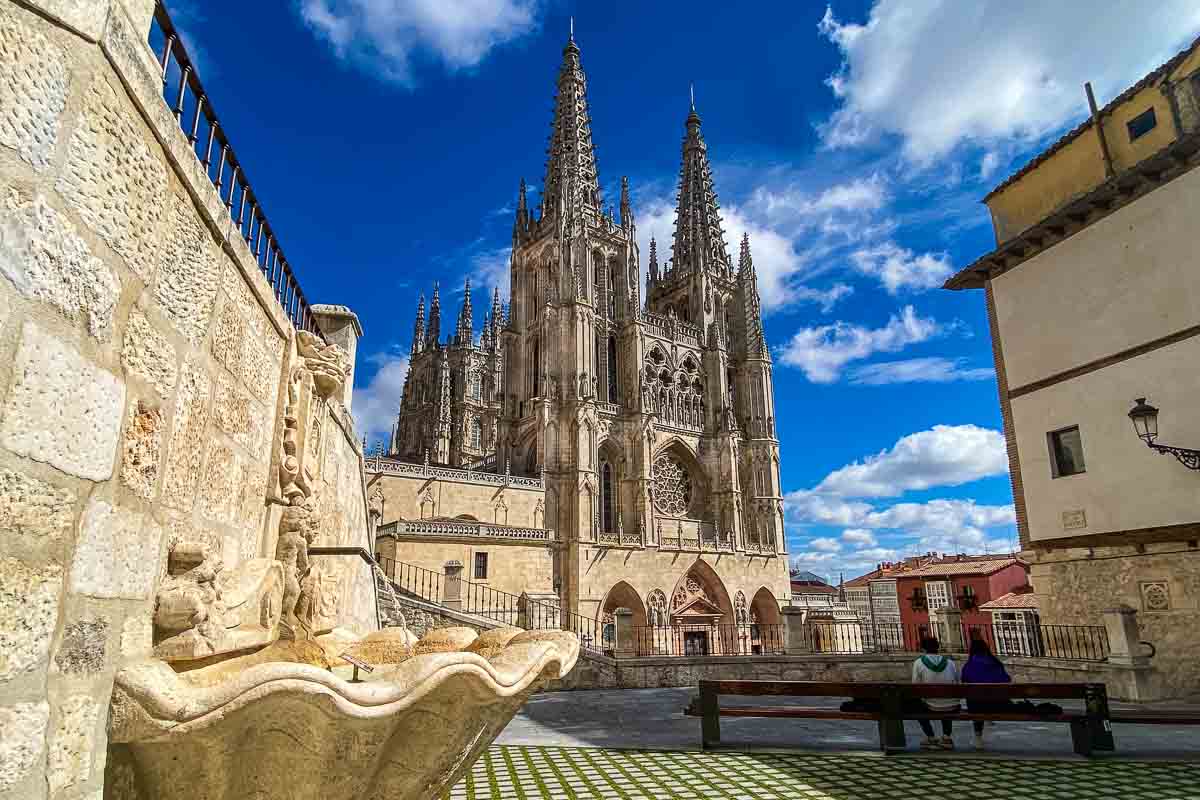
Said by many to be the most beautiful Gothic cathedral in Spain, the Cathedral of Burgos was declared a UNESCO World Heritage Site in 1984. It is the only Spanish cathedral that has this distinction independently, without being joined to the historic center of a city.
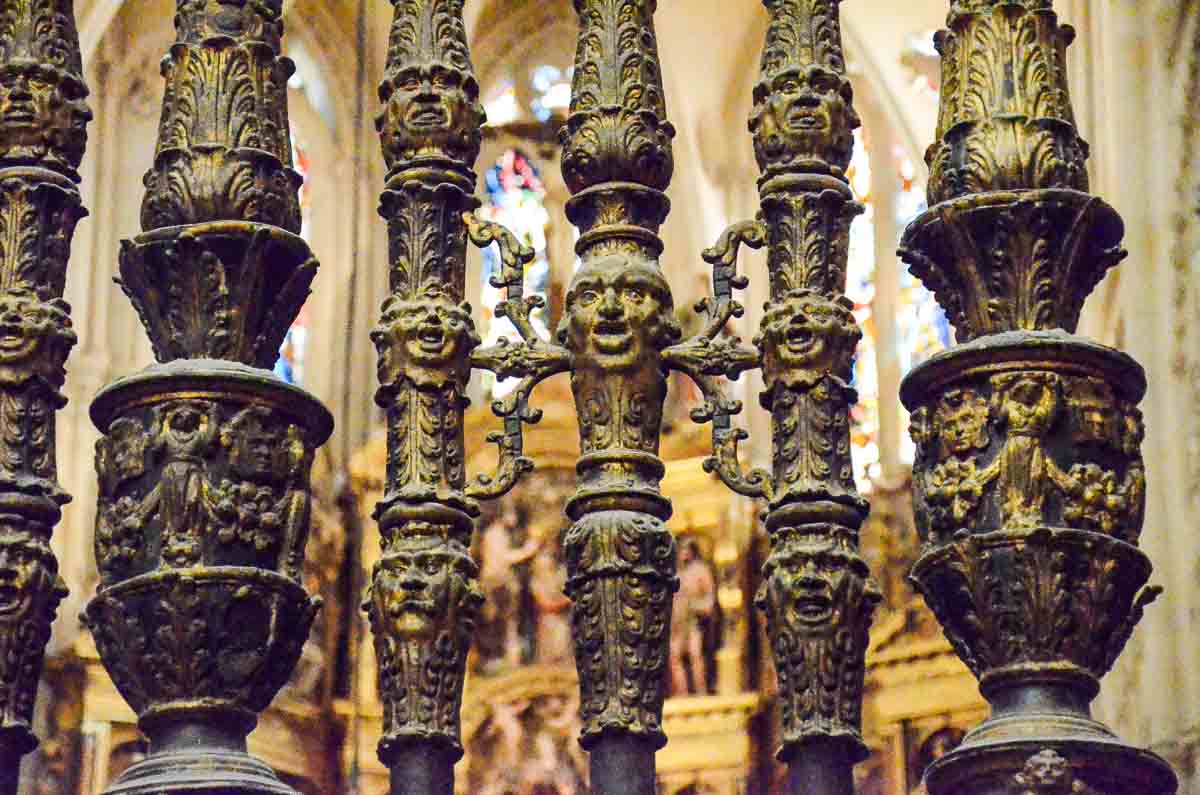
The French style of delicate and intricate stone work is particularly evident in the exterior of the Burgos Cathedral, and in the proliferation of exquisite detail such as the iron bars that surround the choir.
Another feature of the Burgos Cathedral worth noting is the tomb of El Cid and his wife Dona Ximena which lies directly under the dome. El Cid was one of the Christian heroes of the Reconquest of Spain from the Moors. There is an epic poem, the Cantar de mio Cid, which is the oldest preserved epic poem in the Spanish language. When we toured the Burgos Cathedral in the 1990s, we had the pleasure of running into the sacristan of the Cathedral, who joyfully recited passages from the poem as he showed our family around the church. Unfortunately, when we returned to Burgos many years later, he had died. But his own book of poetry about the Burgos Cathedral was available in the Cathedral gift shop.
Take a tour of the Cathedral of Burgos
The Mosque/Cathedral of Córdoba
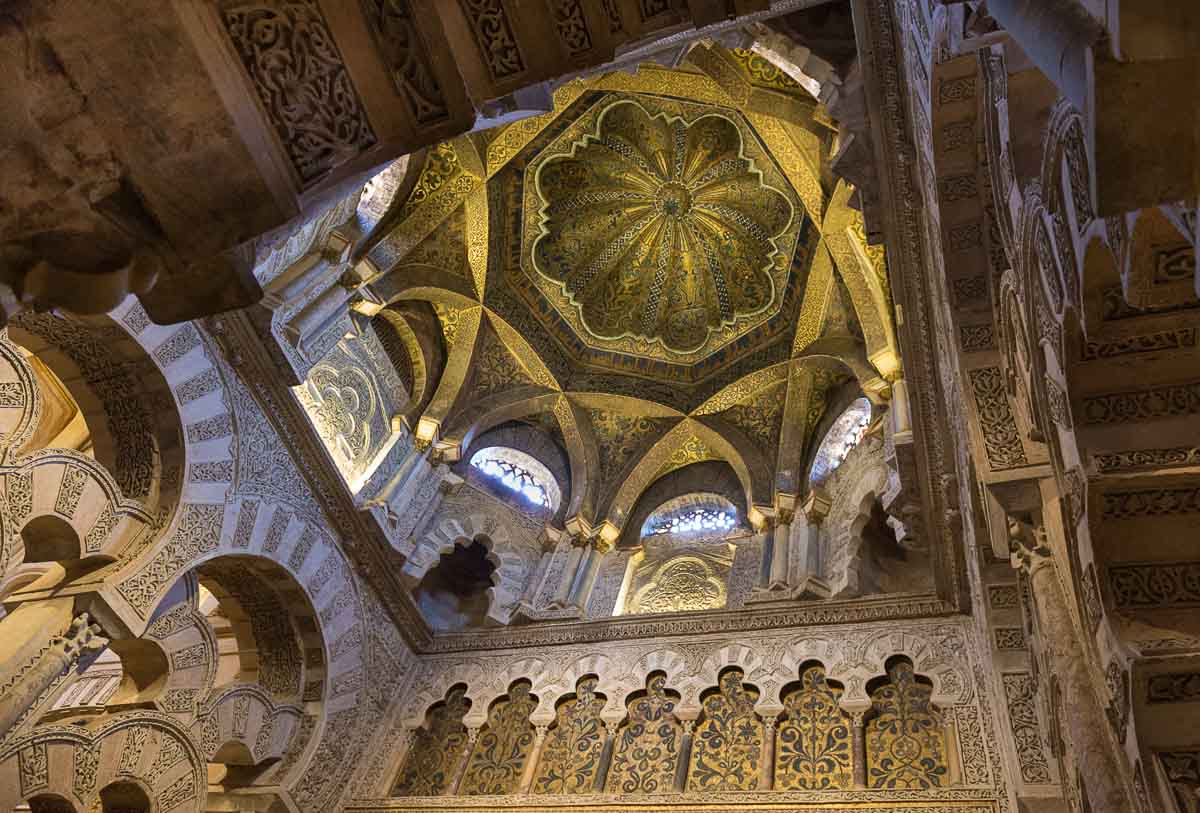
The Mezquita, or Mosque of Córdoba, is one of the real wonders of Spain. Along with the Alhambra of Granada and the Alcazar of Sevilla, it makes up the trifecta of Moorish architecture left over from when the Muslims controlled the Iberian peninsula.
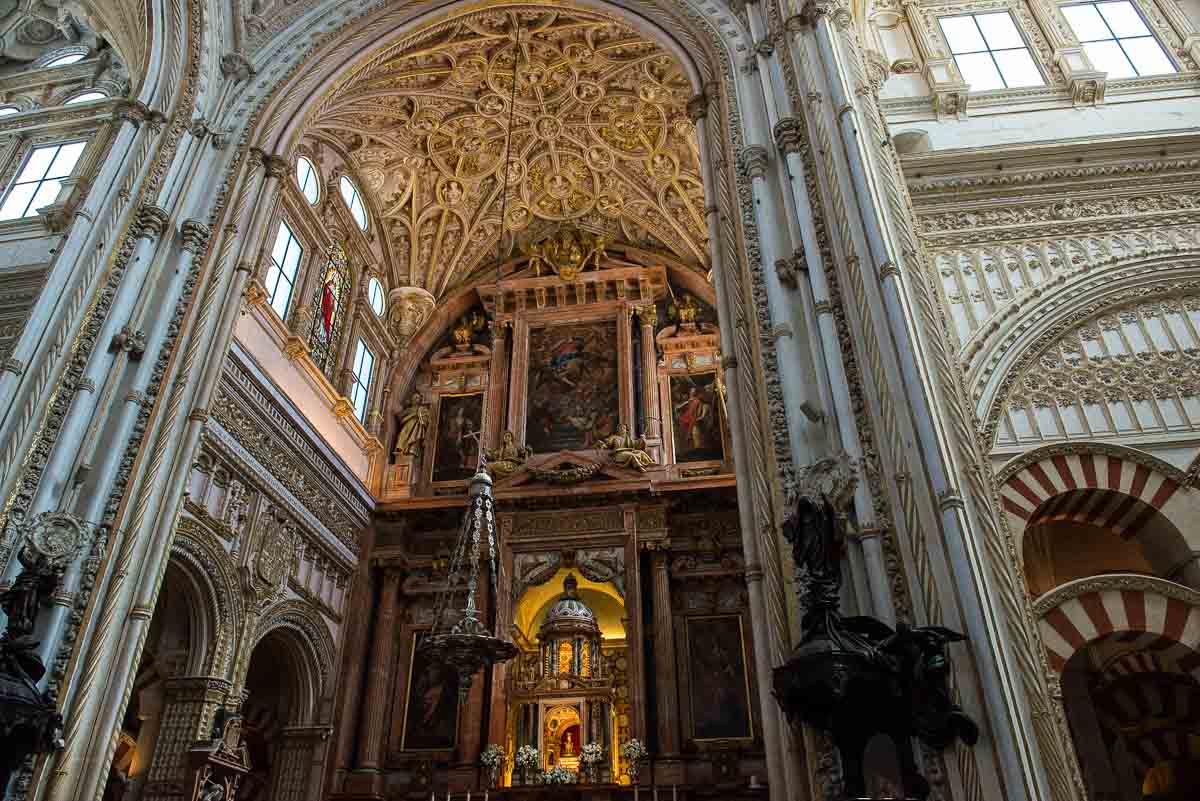
Regrettably, after the Reconquest of Córdoba by the Christian forces, the Christians eventually decided to repurpose the huge elegant mosque into a Christian cathedral, including filling in nearly all the niches around its interior walls with chapels and adding many sculptured scenes from the Christian stories as reliefs in the arches.
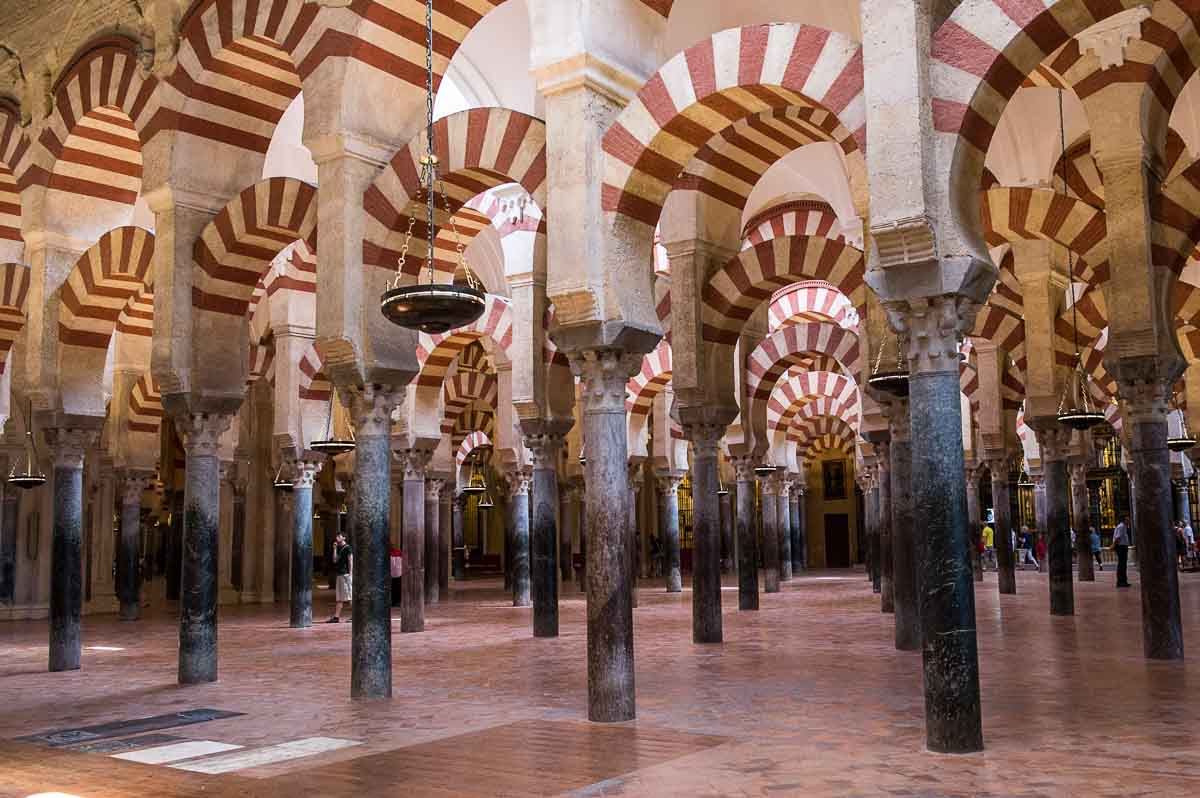
But, much of the original mosque was preserved and you can still gaze at the mihrab and the remaining geometric perfection of the arched aisles and give thanks to the cooler heads which kept them intact.
The New Cathedral of Salamanca
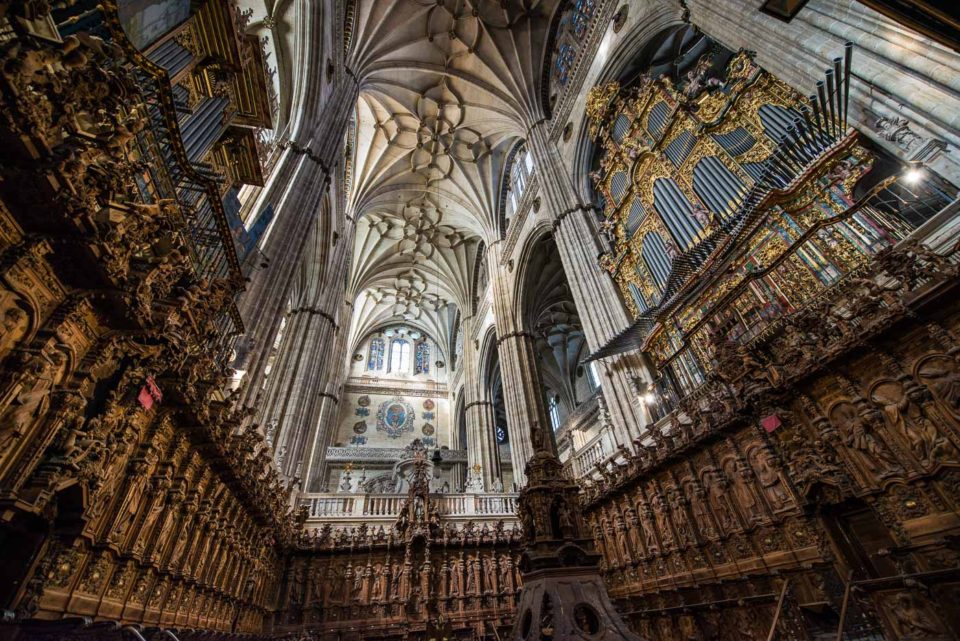
The “New” Cathedral of Salamanca is, as the name suggests, one of the newer massive cathedrals of Spain. Begun in the early 1500s, it was not consecrated until 1733, over 200 years later. It started out in a late Gothic style, with all the linear turrets and flourishes, but finished up as more of a Baroque exercise. So, in practical terms, that means the outside, except for the dome, is more in tune with the adjacent Old Cathedral while the interior is full-on decorous Baroque.
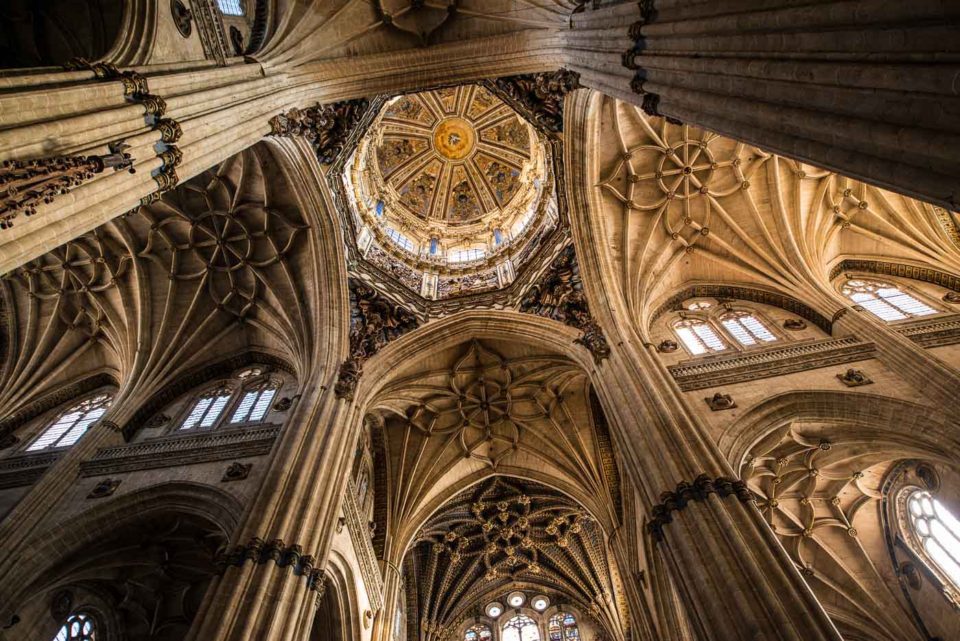
The Old Cathedral of Salamanca
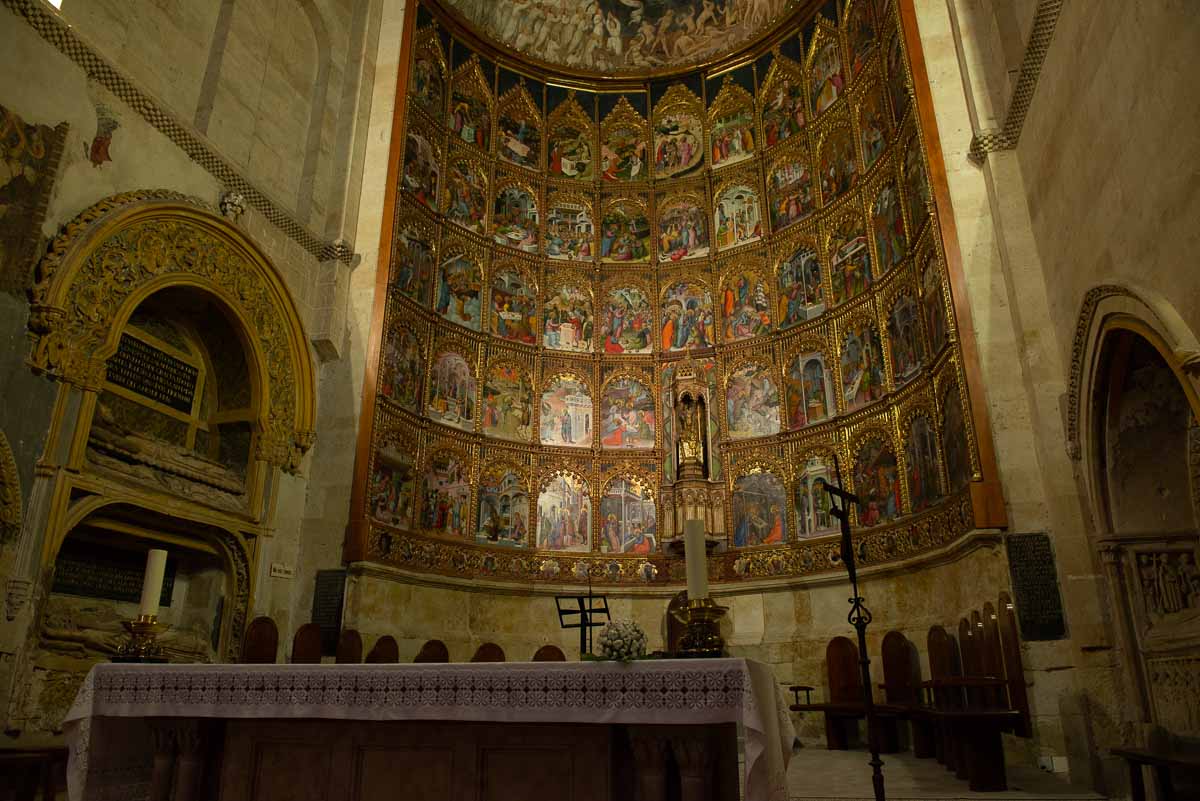
One of the real joys of exploring Salamanca is the discovery of the “old” Salamanca Cathedral adjacent to the new version. It was customary to raze older churches and build new ones on top as tastes changed, but luckily that didn't happen in Salamanca (perhaps because the city was a center of learning?). So, you get to enjoy the old Romanesque style smaller church by just walking down a stairway in the back of the new cathedral.
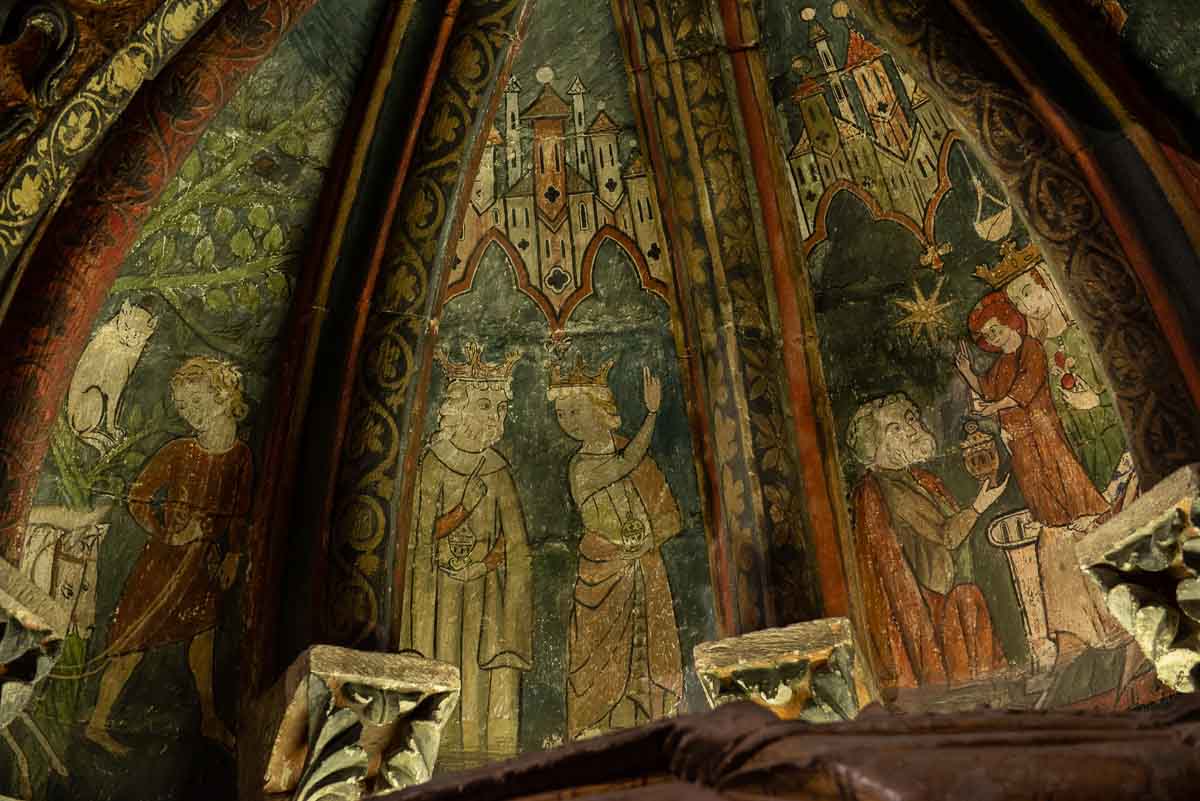
The apse paintings, unfortunately behind a rope so you can't get as close as you might like, are lovely examples of earlier styles of more “flat” didactic storytelling. If you want to get a real sense of the art of the old cathedral, spend some time with the frescoes and carvings on some of the tombs which line the walls surrounding the altar and lead to the cloister.
The Cathedral of Toledo
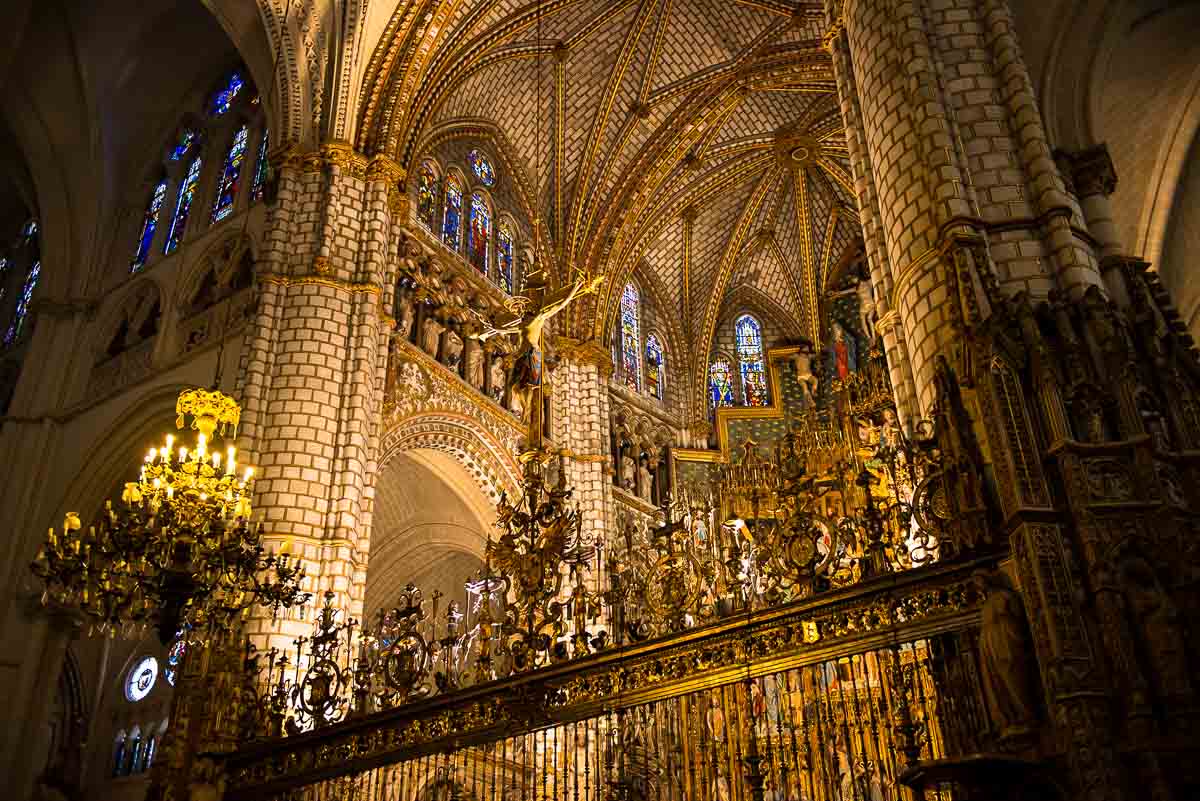
As in most Spanish cities, the cathedral is the city center. The Toledo Cathedral is no exception.
The city of Toledo has always felt special to us. It was one of the first places we visited in Spain, and in a way, epitomizes the country. The Jewish and Moorish cultures that were so instrumental in the development of Spain are evident throughout the city.
The Jews and Muslims were tossed out of Spain or forcibly converted to Christianity by Fernando and Isabel after 1492. This, along with other significant events of that year, viz. the discovery of America by Columbus, and the final conquest of the Moors in Granada, is commemorated in an inscription on the back wall of the Cathedral of Toledo. The “winning” culture, Christianity, had the final say, and got to build the dominant monuments in every Spanish city. In Toledo and the other cities such as Sevilla, Granada, and Córdoba, Christians remodeled many palaces, mosques, and synagogues into Christian churches.
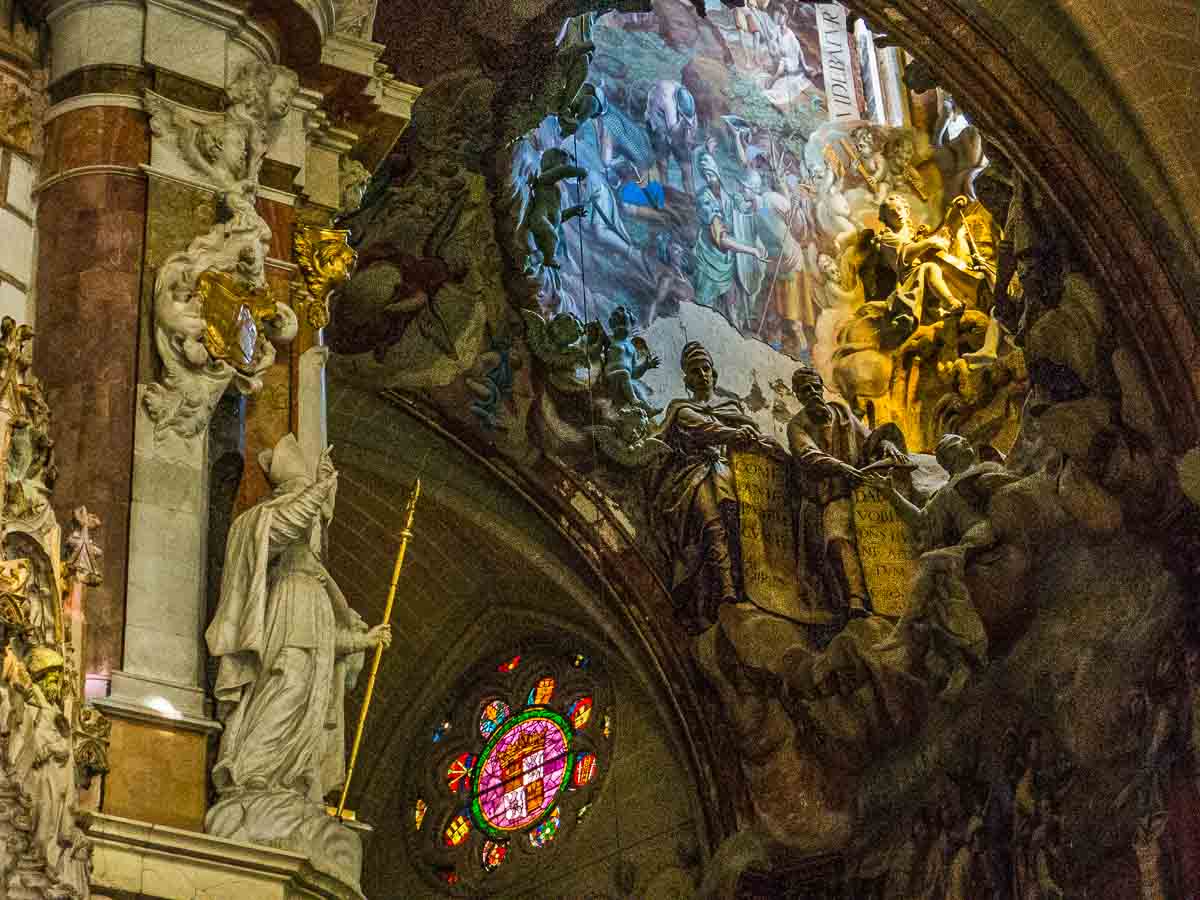
The Cathedral of Toledo exhibits many special features, including the spectacular golden altar overhung by an enormous crucifix and the unique transparente, a hole cut in the ceiling surrounded by sculpture and paintings done in a perspective that naturally leads your eye up to heaven. It's a special effect found in no other church that I'm aware of.
The Cathedral of Avila
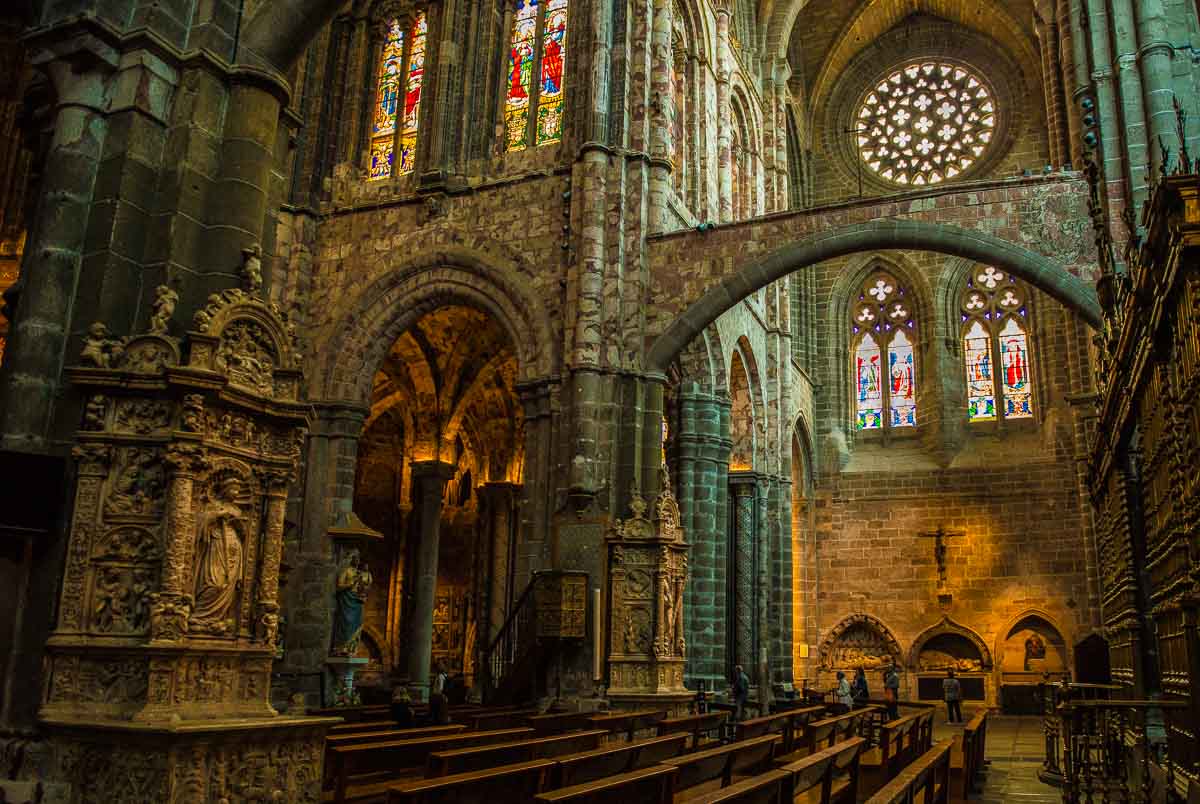
The stone of the apse and ambulatory of the Cathedral of Ávila , too, was unusual. Instead of the grey limestone or granite you usually find in medieval cathedrals–and what is used in the newer Gothic part of this one–the older Romanesque apse and transept of the Ávila cathedral features a locally quarried stone that is shot through with red coloring. This “bloodstone,” as it's called, provides a beautiful warm tone to the otherwise thick and austere Romanesque construction.
The Ávila Cathedral is relatively uncontrived–especially when you consider its vastly more ornate Spanish sisters in Sevilla, Toledo, or Burgos. But it is a lot older, having been started in the 11th Century, right after Ávila was retaken from the Moors. The cathedral's apse actually forms part of Ávila's formidable defensive walls, so you can forgive a certain military simplicity.
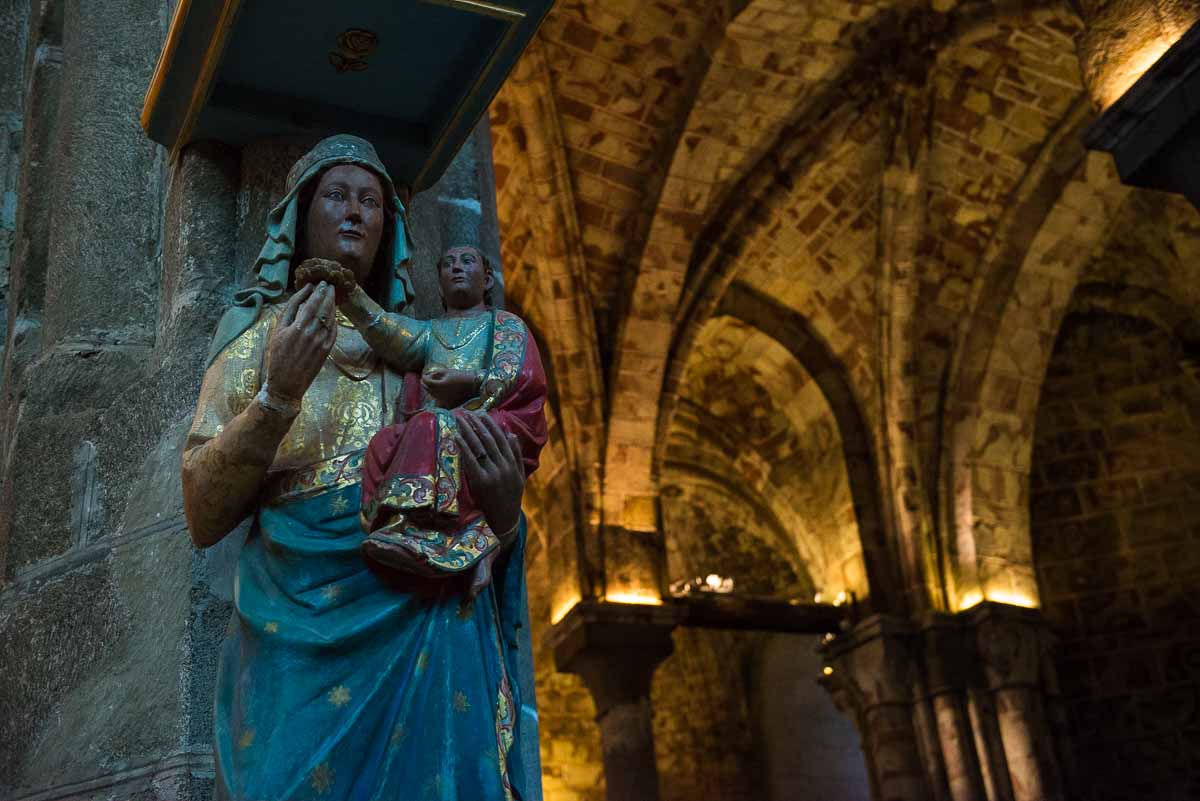
The Cathedral of León
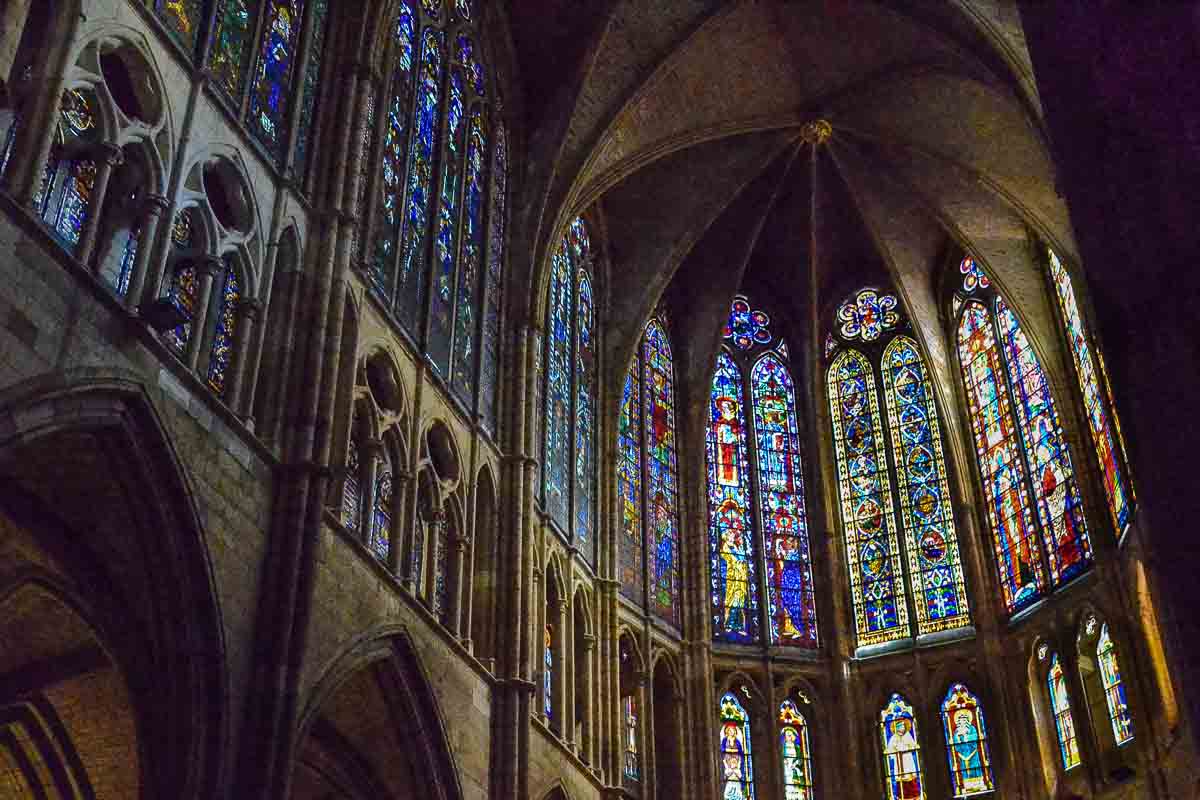
Of all the remarkable cathedrals in Spain, one of my favorites is the Cathedral of León. The windows are the best of any Spanish church, and rival the Sainte Chapelle of Paris. One of the early problems with church architecture was how to keep the walls up if the thick walls were given up to provide for non load-bearing windows. The problems were solved beautifully in Leon.
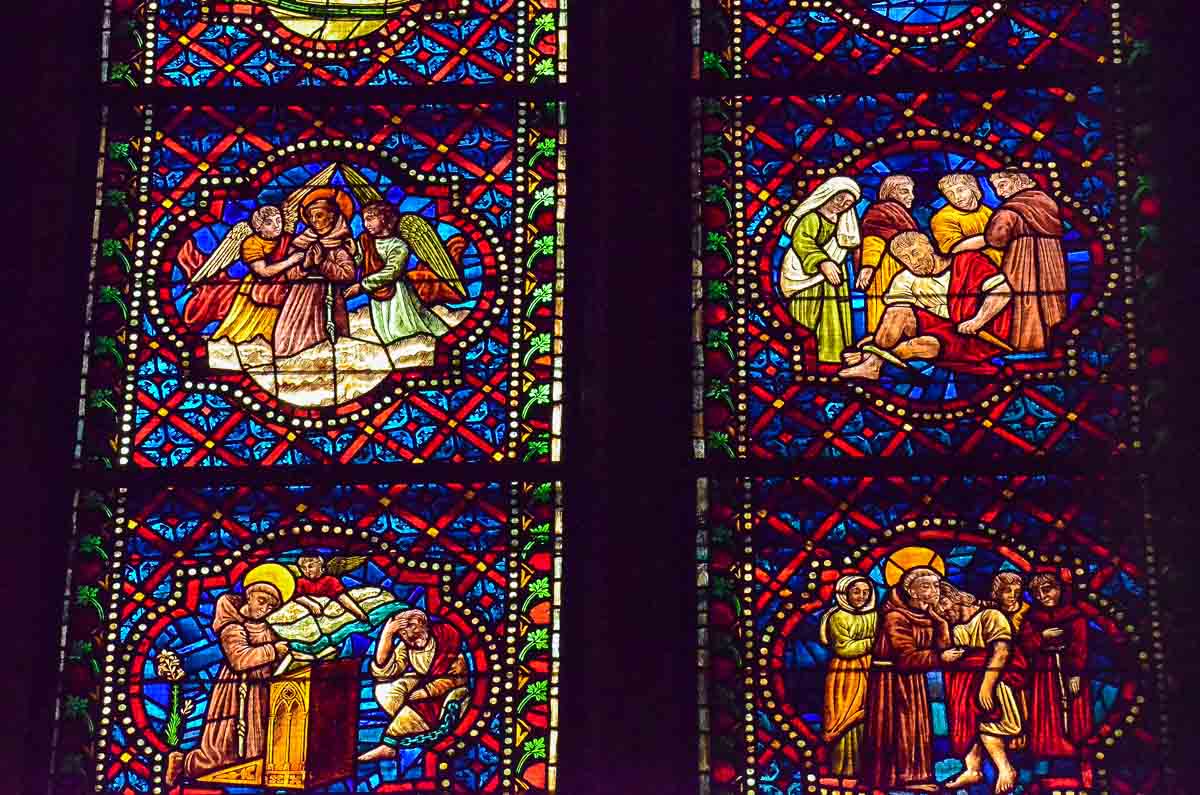
I'm not sure how they did it really. Flying buttresses were the usual solution to hold up the thin walls against the massive pressure of the roof, and those are in evidence in León. But, they're sort of hidden from the outside by building them into a cloister on one side. Anyway, Leon Cathedral is a beautiful cathedral, inside and out.
The Cathedral of Granada
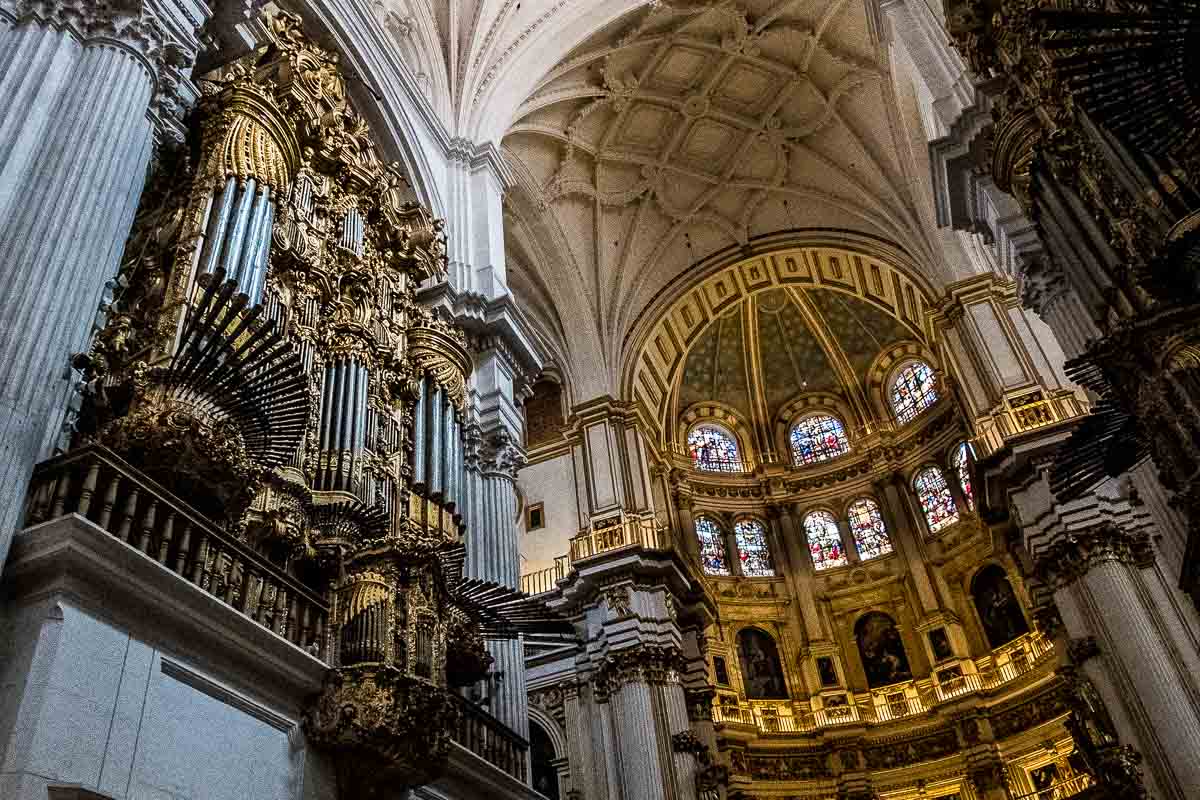
Because Granada was the last city to be captured from the Moors, it was the last of the major cities of Spain to get a cathedral. And, because it was almost the 16th Century when Christianity was reestablished here, styles had changed. No more Gothic, you see. There was now a Renaissance going on, and architects such as Michelangelo had changed the predominant style with such churches as St. Peter's in Rome.
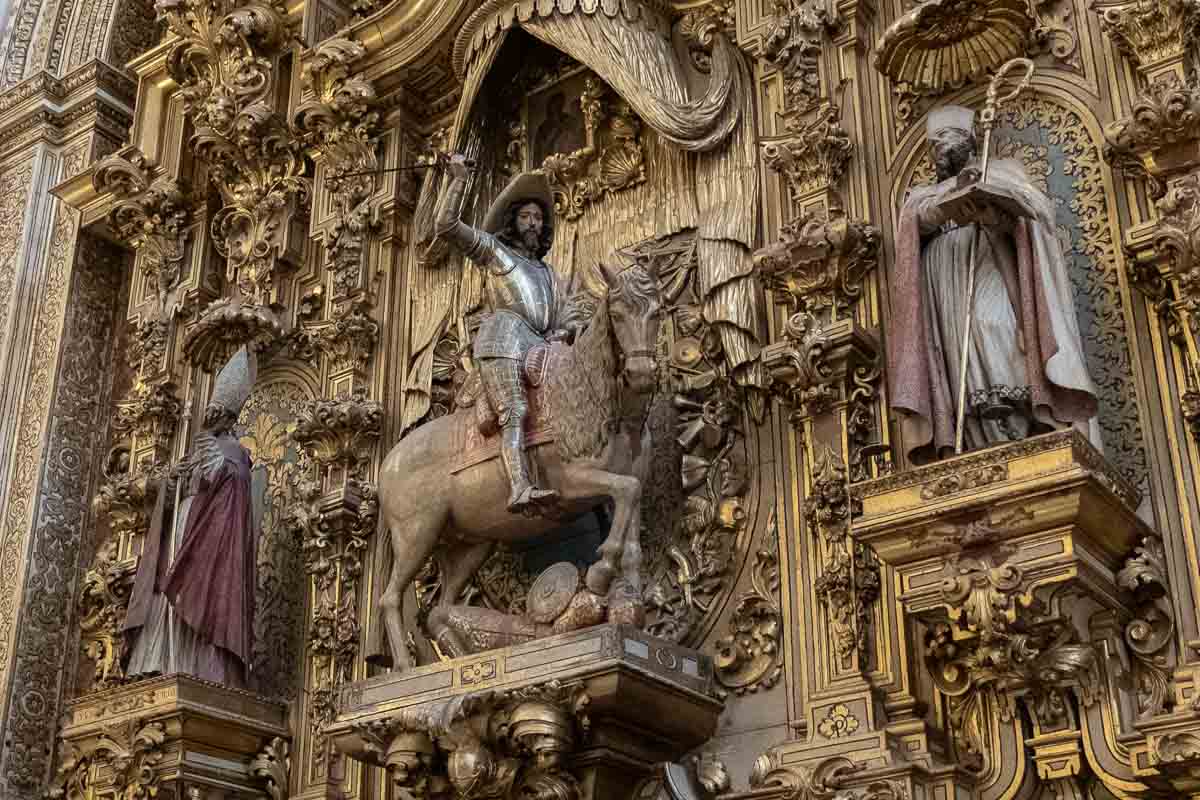
And so, you have what is basically a Renaissance style, which borrowed its simplicity from classical, not Gothic architecture. But the classically simple architecture was later tarted up with a lot of baroque decoration, such as this chapel decoration and ornate organ.
One feature of the Granada Cathedral worth noting is that it is the home of the tombs of the “Catholic Kings” Isabel and Fernando. Their tombs, in an adjacent chapel, are beautifully sculpted, but unfortunately no photography is allowed. If you go be sure to visit them. And also note the tomb of their daughter, Juana, known as La Loca, or The Mad. She had her tomb built larger and higher than that of her accomplished parents.
The Cathedral of Santiago de Compostela
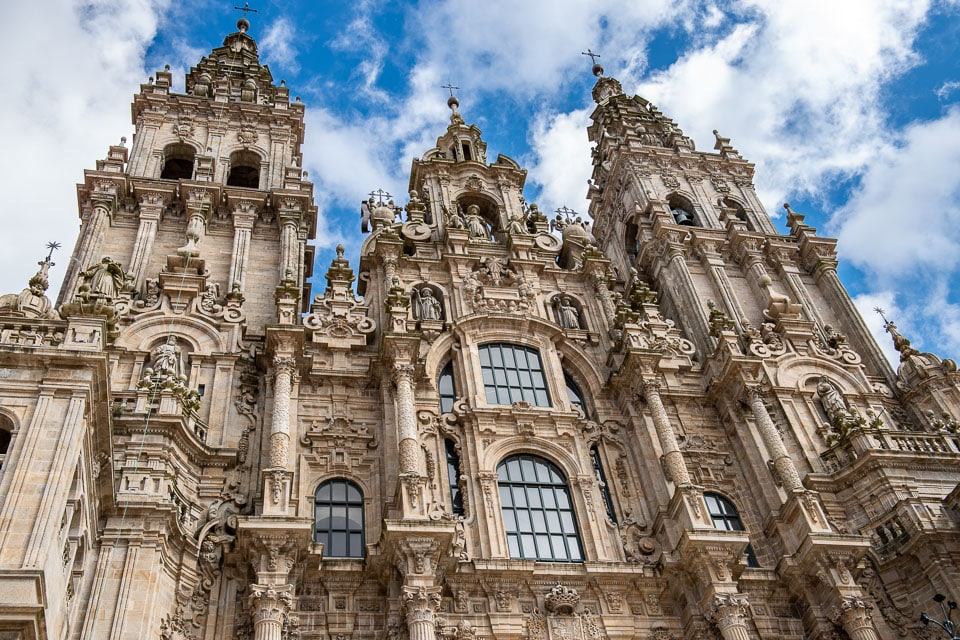
The Cathedral of Santiago de Compostela is, on one level, a magnificent example of Romanesque, Gothic, and Baroque architecture. But, in its role as the destination one of the most important religious pilgrimages routes in the world – The Camino de Santiago – it also holds even greater significance in terms of its art, history, and religious devotion.
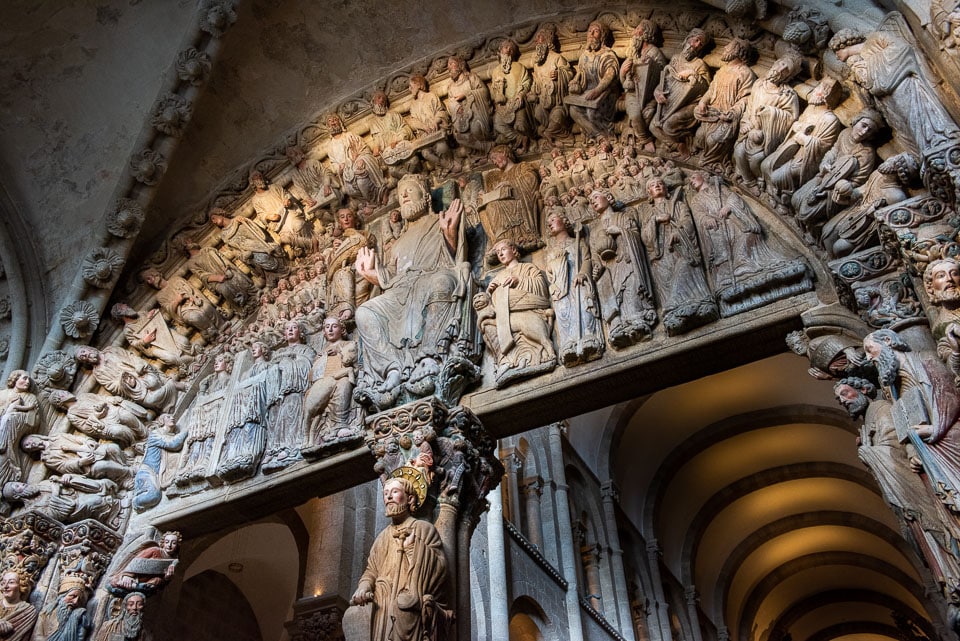
When you enter the front of the Cathedral, you are captivated by the Cathedral's original Portico of Glory. This masterpiece of Romanesque sculpture, created by Master Mateo in the 12th century, features intricate stone carvings depicting scenes from the Last Judgment and other biblical stories. It has been recently restored, after suffering centuries of damage from the sometimes harsh weather of Galicia, as well as the handprints of millions of pilgrims.
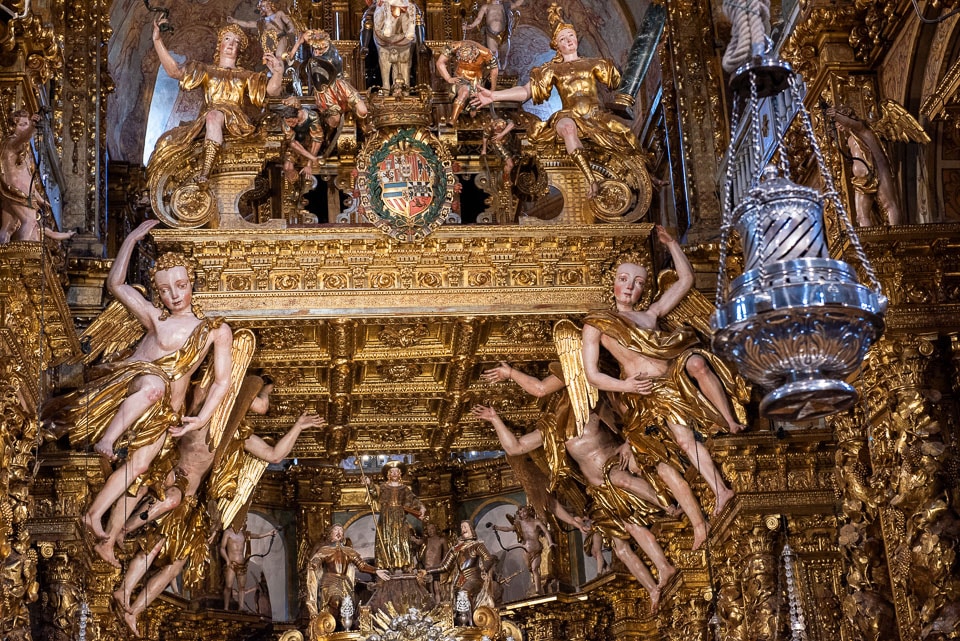
Of course, the later additions of the Baroque elements, such as the high altar, to the simpler Romanesque church tend to overwhelm both the Romanesque elements that remain – and the visitor.
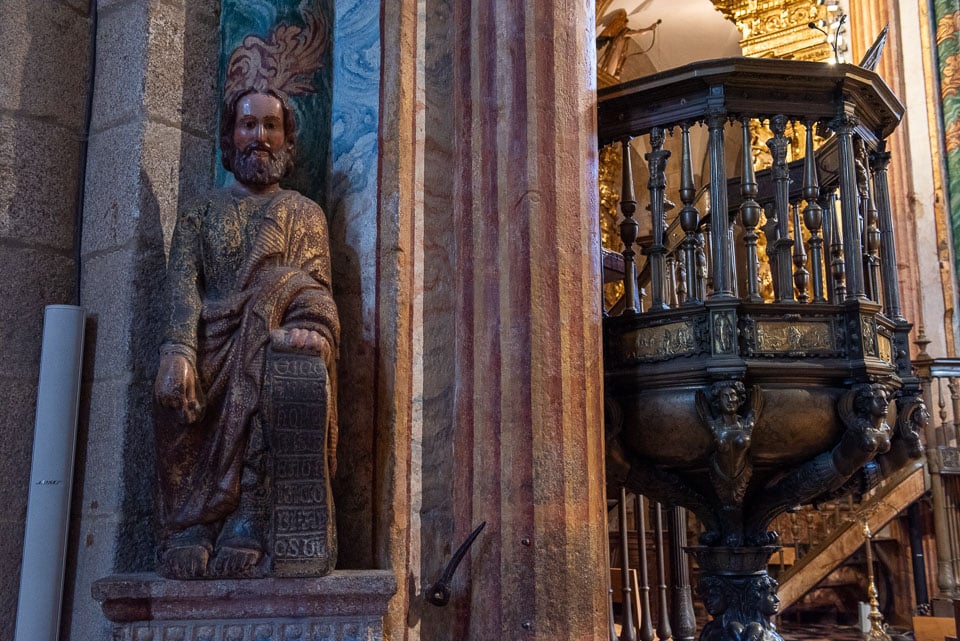
The Cathedral of Zaragoza: La Seo
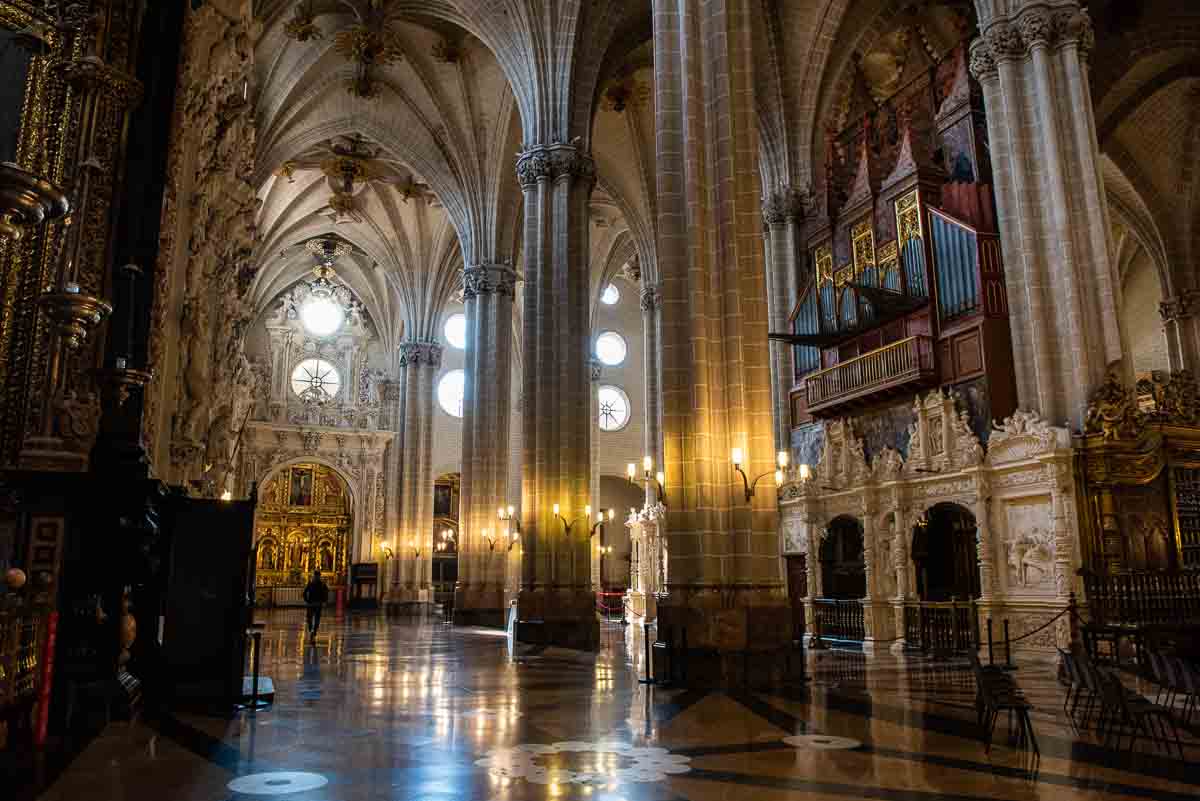
Zaragoza, the ancient capital of Aragón, has, if you will, two competing cathedrals. There is the older Cathedral of the Savior (Catedral del Salvador, known as La Seo) and the Cathedral of Our Lady of the Pillar (La Basilica de Nuestra Señora del Pilar, or simply, El Pilar.) The rivalry between the two cathedrals of Zaragoza was only settled in the 17th Century when the Pope created them co-cathedrals, merging their administration under one Canon. So, in actuality, both churches hold the title Cathedral of Zaragoza.
While El Pilar leads in the number of pilgrims it attracts, (because that cathedral houses the pillar which was, according to the Church, the site of an apparition of the Virgin Mary to Saint James – known as Santiago in Spain.) El Pilar was mostly built in the 18th Century. La Seo is much older, as the building dates back to the Reconquista of Aragón in the early 12th Century. The Aragonese word “seo”, by the way, means “see” as in the seat of a bishop, in case you were wondering.
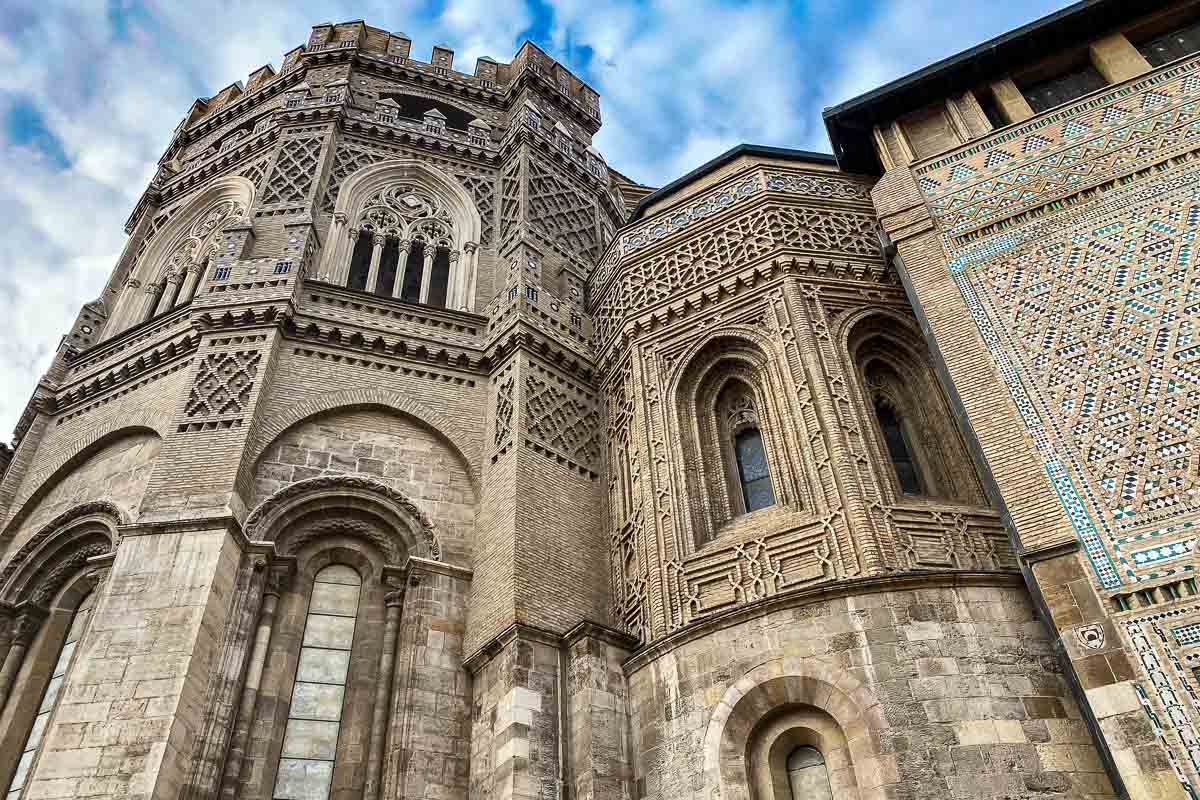
The mudéjar-style exterior of La Seo hearkens back to its history as a former mosque. The Christians first built a Romanesque style church on the site of the demolished mosque, but when La Seo was rebuilt in the early 14th Century in a Gothic style, the original Romanesque ground floor was gloriously topped with mudéjar decoration.
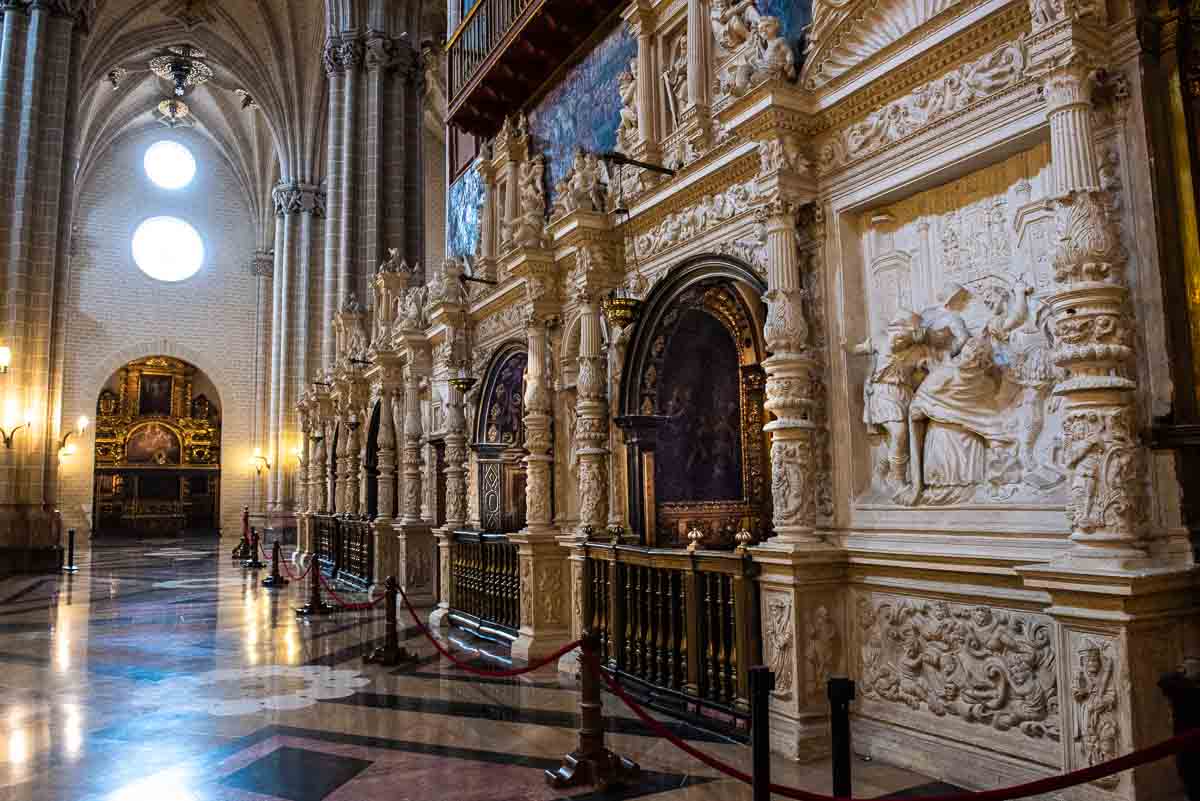
Although the main style of the La Seo construction is Gothic, during the subsequent centuries the church was overtaken by Baroque elements, especially in the myriad chapels and the choir.
The Cathedral of Zaragoza: El Pilar
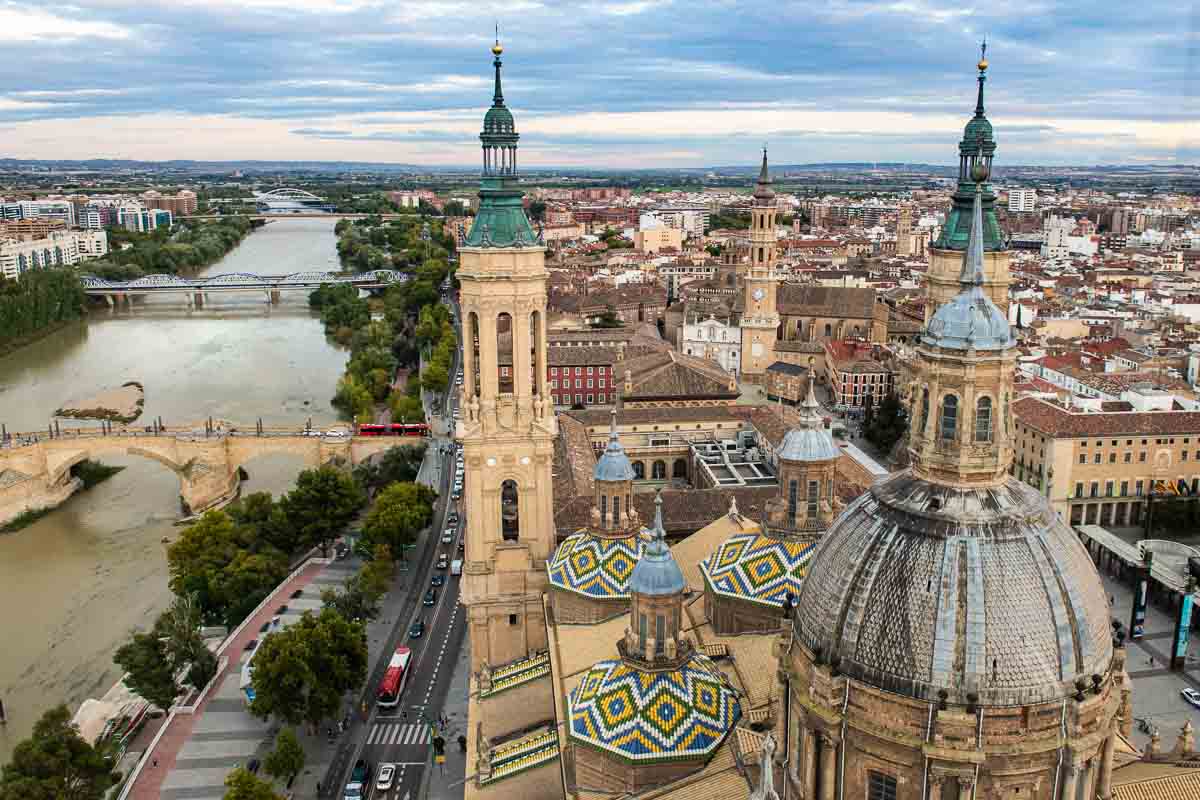
According to the ancient local tradition, Saint James was preaching the Gospel in Spain, but was disheartened by the resistance of the Iberians. Tradition says the Mother of God appeared to him on the banks of the Ebro and gave him a column of stone and instructed him to build a church in her honor. James is believed to have had a small chapel built in Mary's honor, the first church ever dedicated to her.
Numerous churches have since been built upon the site. The chapel built by James later gave way to a basilica during the time of the first Christian emperor, Constantine. Subsequently, a Romanesque church was built and damaged by fire in the 15th Century. Following that, a Gothic/Mudéjar style church was built.
The present church in Baroque style was begun in 1681 and completed in 1686. In 1725, it was decided to change the orientation of the Chapel of the Pillar and enclose it in an even larger edifice. The building then realized its present dimensions of 130 meters long by 67 wide, with eleven cupolas and four towers.
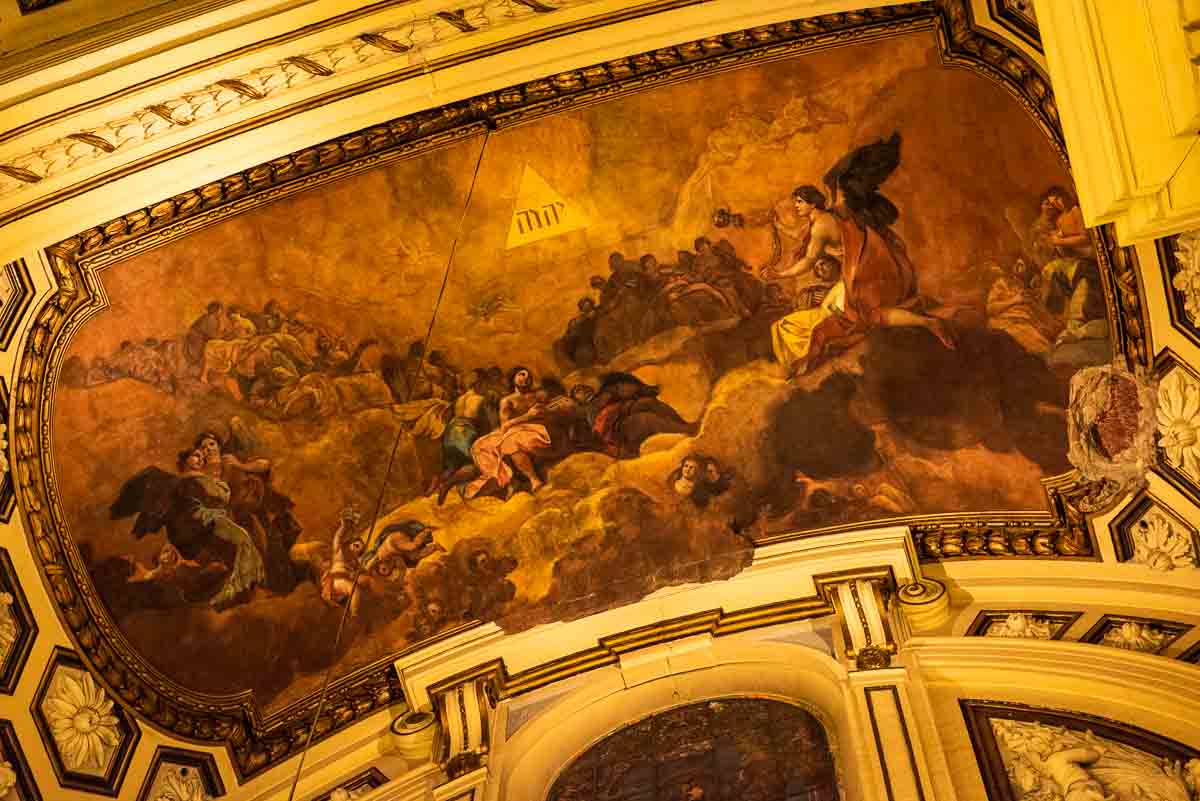
It's good to know a little about the cathedral of El Pilar before you go, otherwise you might forget to look up at the ceiling frescoes. It would be especially bad luck to miss this one, by Zaragoza's native son, Francisco de Goya. The ceiling panel was one of Goya's first commissions, before he gained fame as the court painter to the Spanish king Carlos IV, and before he composed his most famous works now in The Prado.
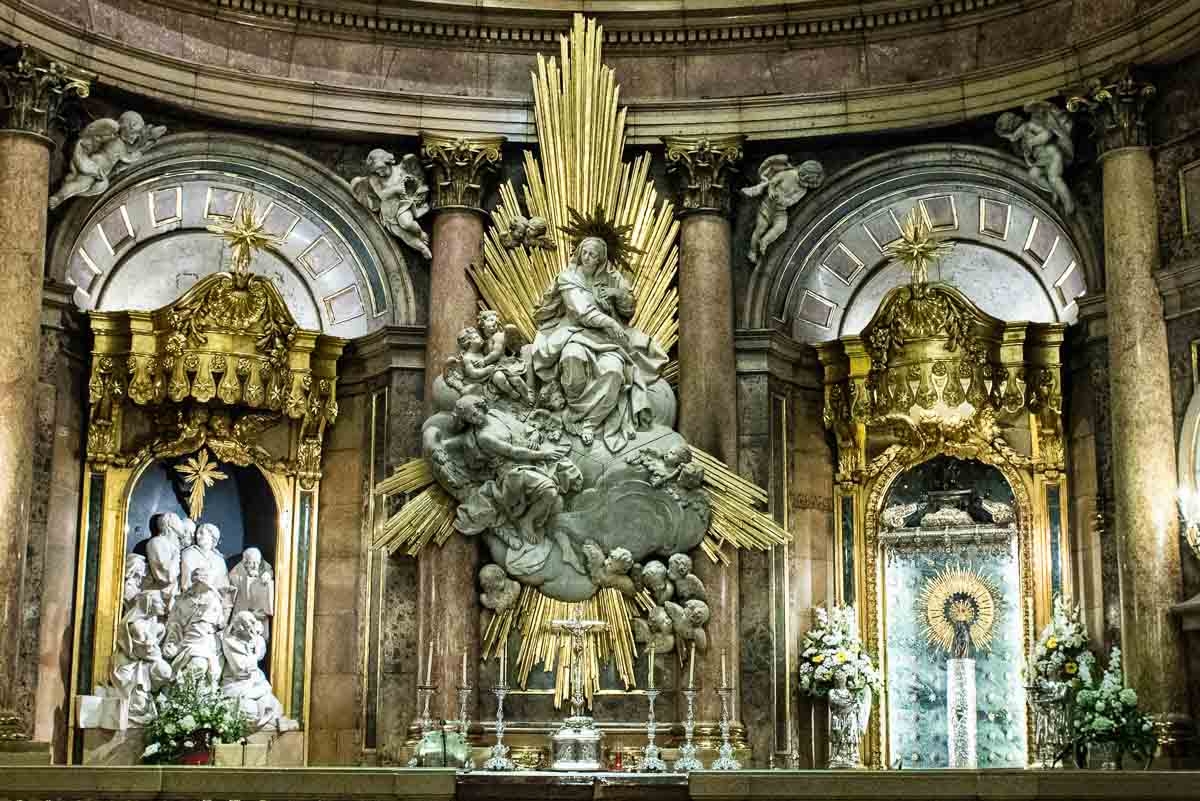
According to the story as depicted at the altar of the pillar, the Virgin Mary appeared to Saint James (Santiago) to encourage him in his efforts to bring the message of Jesus to the Iberian people in the year 40 AD. The centerpiece is the Virgin looking down on Saint James on the left, and pointing to the pillar she appeared on on the right. This site ranks right up there with other appearances of the Virgin in places like Fatima, Lourdes, and Guadalupe. In other words, it's a pretty special place to Catholics.
The Cathedral of Málaga
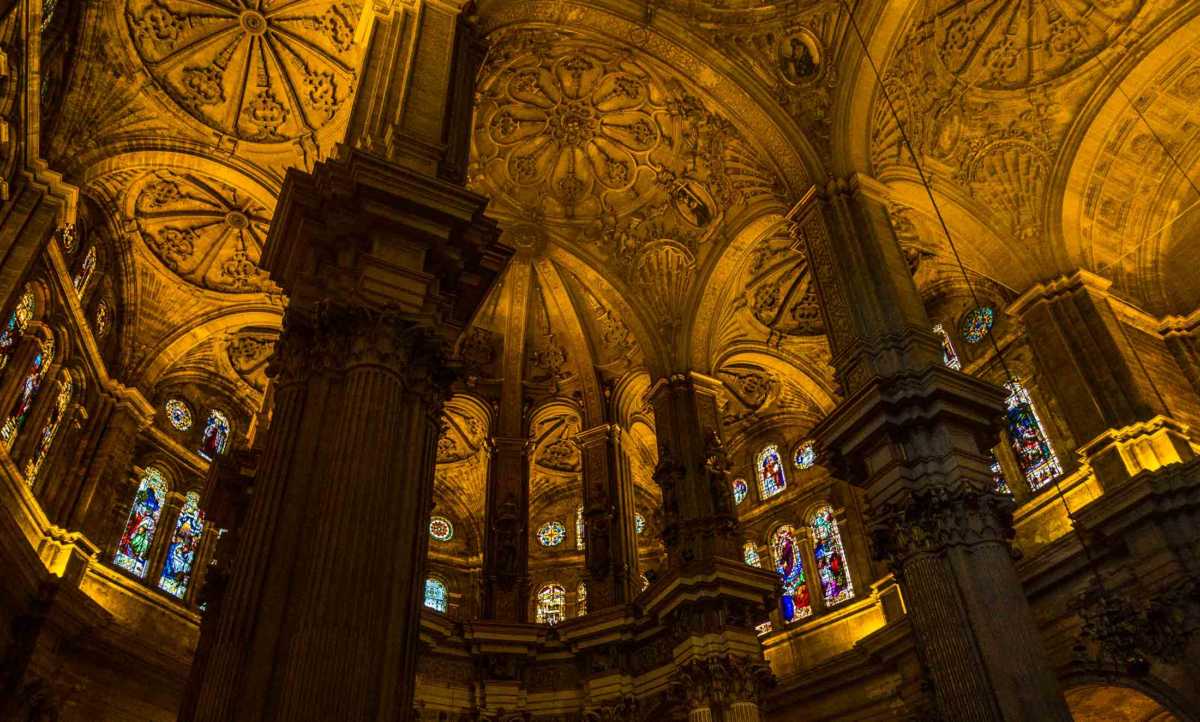
The Cathedral of Málaga is a late Renaissance masterpiece, which distinguishes it from most of the cathedrals of Spain, which were built at least a few hundred years earlier. Like Granada, the Málaga Cathedral was started in the early 1500s, soon after Málaga was recaptured from the Moors in 1487 (and after the final reconquest in 1492 of the last Moorish outpost of Granada, just up the road a piece).
There's a lot of Baroque work in here too. But what really stands out is the massiveness of the columns and their exaggerated classical capitals. The columns themselves lend a real sense of weight and grandeur to the cathedral, but unfortunately also make it really difficult to get any sense of the sweep of the lovely windows of the apse. They are set back from the altar, which is surrounded by the columns, so there's no way to really get a look at them all at once as they peek out from between the massive supports.
At any rate, the ceiling, as you can see, is quite lovely, and perhaps that makes up a bit for hiding the windows.
The Cathedral of Santa Maria of Palma, “La Seu”
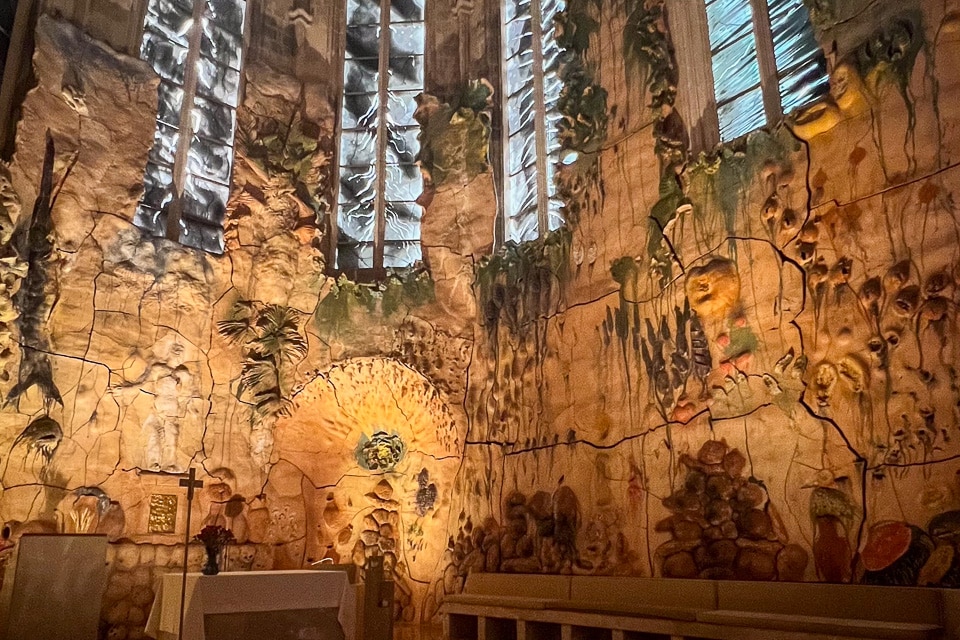
La Seu, the cathedral of Palma, is the tallest Gothic church in Spain, and the 3rd tallest in the world. (The nave is 44 meters tall.) It appears even more imposing because of its site atop the enormous walls and citadel of the Roman city, and adjacent to the Royal Palace of La Almudaina.
La Seu (so called because it is the seat of the Diocese of Mallorca) was built on a previous mosque which was in turn built upon an early Christian church. Construction of the Gothic cathedral began in 1229 under King James I of Aragon and continued to 1601. Over the centuries, Gothic, Renaissance, Baroque, and even modern styles were applied.
Contemporary Spanish artist Miguel Barceló’s ceramic installation in the right-hand apse, St. Peter’s Chapel, brings the architectural vernacular to the 21st Century. In cracked and rough surfaces below dark streaky windows, the three sides of the chapel depict the miracle of multiplying loaves and fishes. The effect is of an underwater grotto and swirling life surrounding an image (utilizing Barceló’s own body) of Christ. It’s as unsettling as it is intriguing.
Catalan architect Anton Gaudí participated in a restoration of the church in 1901, and contributed an impressive baldachin, or canopy, above the altar, as well as improvements to sound and sight lines.
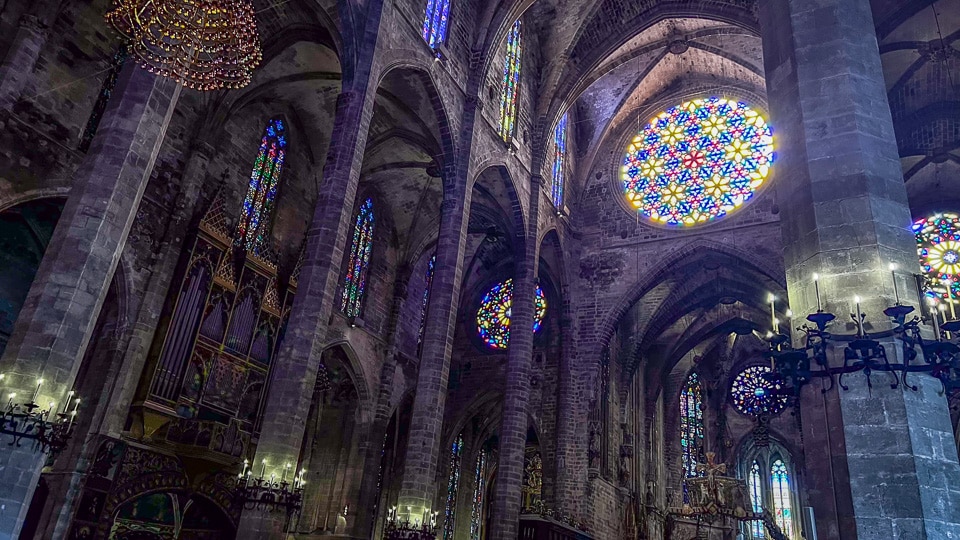
Palma’s La Seu is generally known for its huge rosette window and the fact that twice a year (Feb 2 and Nov 11) the light through the window completes a full image on the opposite wall, below another, smaller rosette window.Tours up the 300 steps to the rooftop are well worth it, to have a look at the buttresses, the rosette window from outside, the broad port and city views.
Read more about things to see in Mallorca in our post covering the whole island.
If you like the spectacular architecture and decoration of Spanish cathedrals, be sure to see our post about the Seven Wonders of Spain.
More Spain Travel Ideas
Check out our post on Traditional Festivals of Spain, many of which are centered in religious observance.
When you travel to Spain, or anywhere in Europe, consider making your phone and digital communications super easy with Holafly's eSim for travel to Europe.
Up Your Travel Skills
Looking to book your next trip? Use these resources that are tried and tested by us. First, to get our best travel tips, sign up for our email newsletter. Then, be sure to start your reading with our Resources Page where we highlight all the great travel companies and products that we trust. Travel Accessories: Check out our list of all the accessories we carry to make getting there and being there a lot easier. Credit Cards: See our detailed post on how to choose the right travel rewards credit card for you. Flights: Start finding the very best flight deals by subscribing to Thrifty Traveler. Book your Hotel: Find the best prices on hotels with Booking.com. See all of the gear and books we like in one place on our Amazon shop.Got a comment on this post? Join the conversation on Facebook, Instagram, or Threads and share your thoughts!


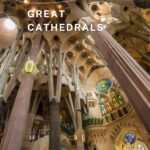

Comments are closed.